We are excited to extend an invitation to the highly anticipated 2024 Conference, hosted by IHEA’s Victoria/Tasmania Branch. The Conference will be held from 3 - 5 June 2024 at Marvel Stadium, Docklands Melbourne.
HEALTHCARE FACILITIES

PROUDLY SPONSORED BY
We are excited to extend an invitation to the highly anticipated 2024 Conference, hosted by IHEA’s Victoria/Tasmania Branch. The Conference will be held from 3 - 5 June 2024 at Marvel Stadium, Docklands Melbourne.
Don’t hold your breath for too long.


Cold-Plasma Technology

Unique sanitizer



No filters. No waste. No maintenance.
Cold-Plasma. Different
Cold-Plasma devices can be used safely in:
• Waiting rooms and clinics
• High-risk patients
• Ambulances
• Operating theatres
• Community cars
• Hospitals
• Buses and taxis
• Offices

• PlasmoCar
• PlasmoLight
Eliminates related to transport,
•
•
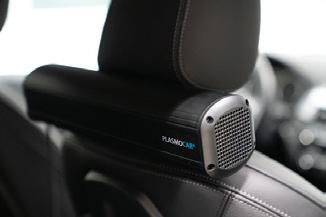
Cold-Plasma related
Awarded 2015 (Shaumburgh) and 2022 German Innovation Award, and Best Hand Hygiene at Healthy Innovation Awards, Dubai in 2021

www.
soularchhealthcare.com.au


Breathe safely with the break-through technology in air sanitizers
Breathe safely with the break-through technology in air sanitizer.
Breathe safely with the break-through technology in air sanitizer.
Cold-Plasma. Different versions for any situation
Cold-Plasma Different versions for any situation related to transport, large and small rooms.
• PlasmoCar • PlasmoAir
• PlasmoCar
• PlasmoLight
versions for any situation
• PlasmoAir

No filters. No waste. No maintenance. related to transport, large and small rooms.
• PlasmoLight

Eliminates for entire interior:
PlasmoCar • PlasmoAir
• PlasmoHands
• Native bacteria
• Animal epithelia
PlasmoLight • PlasmoHands
• Odours transport, large and small rooms.
Enveloped viruses (incl. SARS, COVID-2
No filters. No waste. No maintenance.
Eliminates for entire interior:
• Native bacteria
• Animal epithelia


0418 634 534
Breathe safely with the break-through technology in air sanitizer.
No filters. No waste. No maintenance.
• Fungi & Mold
• Enveloped viruses (incl. SARS, COVID-2 & monkey pox)
Eliminates for entire interior:
Cold-Plasma. Different versions for any situation
• Native bacteria
to transport, large and small rooms.
• PlasmoCar

• Anbimal epithelia
0418 634 534
• PlasmoAir
• Fungi and Mould
• PlasmoLight
• Odours
• PlasmoHands
No filters. No waste. No maintenance.
Eliminates for entire interior:
• Native bacteria
• Fungi & Mold

• Enveloped viruses (including SARS, COVID-2 and Monkey Pox
• Animal epithelia

0418

• Odours
• Enveloped viruses (incl. SARS, COVID-2 & monkey pox)
634 534


How pure is the medical breathing air that you are supplying to your patients?
Let us introduce you to our new and improved pure medical air (PMA) system, designed for medical breathing air purification, regulation, and control.
The PMA is a duplex air purification module with central controller intended for producing medical air in compliance with AS2896-2021 and AS2568-2019. Pure medical breathing for your patients when they are at their most vulnerable.
What’s New?
Improved design
Improved filters
Improved central control
BeaconMedaes is a global leading specialist in the design, supply and installation of piped medical gas distribution. For the purest medical breathing air supply, in the most efficient and spacesaving equipment configuration, with comprehensive real-time data monitoring, the BeaconMedaes PMA is the ideal medical breathing air solution to ensure your patients receive the care they deserve.


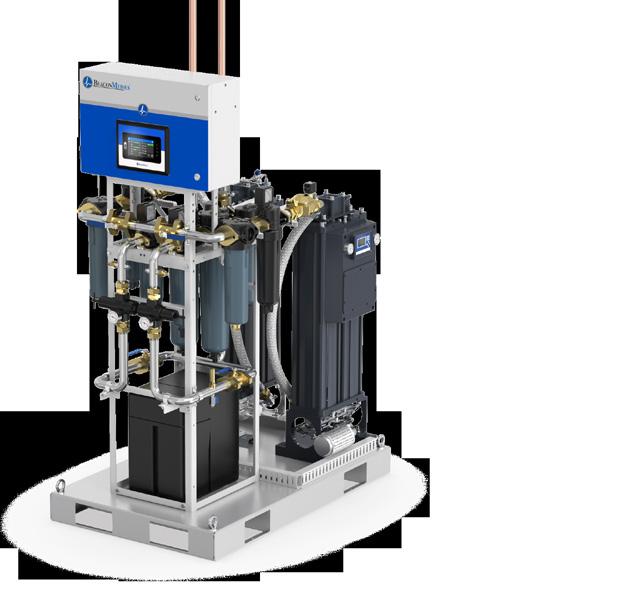




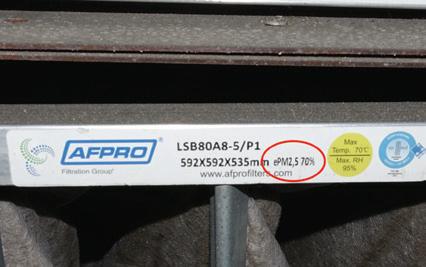
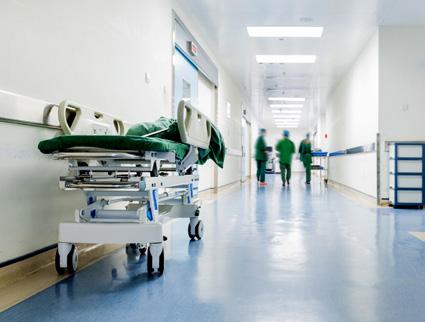






EDITOR’S MESSAGE

Iam excited to place into your hands the Autumn 2024 edition of Healthcare Facilities, and I am always grateful for the contributions from around the country that have made this another superb publication. I applaud the recent and planned activities of many members around the country and encourage all members to seek and make opportunities to support IHEA to support you.
Readers and members have long benefited from the shared wisdom and experiences of the Institute of Healthcare Engineering, Australia as they continue to provide support to a world-class healthcare system that keeps getting better. As technology, resources and knowledge continue to expand and evolve, so the research, treatment and medicine in our healthcare systems has to respond to old, new and emerging health issues.
And so those who design, build, maintain, operate and refresh the facilities in which these services are delivered, must stay abreast of this evolving and changing environment.
And this is where IHEA delivers. It brings together those with ground-breaking technology and those with wellestablished solutions, and years of experience where the unchanging laws of physics and nature must be understood, to provide an environment that enhances the patient outcome and experience.
It brings together the adage, that “some things never change” and its competing axiom “there is nothing permanent except change”, with the later being attributed to the ancient Greek philosopher, Heraclitus (c:540BC).
And so healthcare engineering professionals must be able to adapt the stable laws of physics to a frequently changing environment. The results of this complex blend, provide amazing examples of improvements and developments around this country and around the world that continue to deliver beneficial solutions.
IHEA is proud to support this work, and through its members here and its many international connections this Journal brings this to you once again. I hope you enjoy this collection of wisdom, advice, solutions and opportunities and find ways to share this with your colleagues.
I look forward to seeing you in Melbourne at the IHEA National Conference in June, and as always would be glad for your continued contributions and input to Healthcare Facilities.
Regards
Darryl Pitcher – Editor



Experts in Medical Compressed Air Solutions
Since 1994, Cleveland Compressed Air Services have proudly provided and distributed our products and services to the healthcare industry. We have over 30 years of experience and an extensive range of high-quality products including Class ZERO Oil Free Air Compressors, Ultra Low Purge dryers, HLI enabled Breathing Air Purifiers and 15bar Surgical Tool Air Compressors. We offer tailored solutions backed by quality products, audits, installations, service & repairs.
Products Include:
• Medical Breathing Air Compressors Systems
• Medical Tool Air Compressor Systems
• CSSD Compressor Systems Laboratory Air and Gas Generation Systems
• Medical Suction systems
• Filtration
• On-site Nitrogen Generation Systems
• On-site Oxygen Generation Systems
Service providers for:
• Royal Perth Hospital
Sir Charles Gardiner Hospital
• Perth Childrens Hospital
• Hollywood Private Hospital
• St John of God Hospital Network
King Edward Memorial Hospital
Fiona Stanley Hospital Joondalup Health Campus & Many more
Cleveland Compressed Air Services are authorised service representatives for well-renowned brands such as:






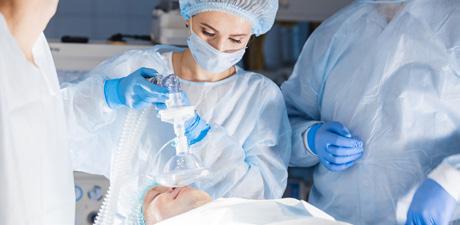

24/7 Support
Our network of service technicians are available 24/7. No matter when problems arise, we’ll be there to help!
Medical Expertise Oil Free Solutions
We have established ourselves as industry leaders, offering Medical Compressed Air Solutions with a wealth of experience.
We are licensed distributors of oil-free and environmentally friendly compressor solutions
NATIONAL PRESIDENT’S MESSAGE

Members of IHEA have been provided with numerous opportunities to share and learn from each other in the Lunch ‘n Learn professional development presentations that are being well coordinated by the team in the Vic-Tas branch together with several experts across a range of industries.
These sessions are relevant to the healthcare engineering sector and are a valuable contribution that I encourage members to engage with through the live Zoom sessions. Importantly all of the Lunch n Learn Seminars are recorded and are made available under the Resources tab on the IHEA website, www.ihea.org.au The topics covered are broad and relevant, and if there are any topics that you would like to see covered, or that you would like to present on, please reach out to Vanessa Gallina via email at ihea.members@ihea.org.au We encourage corporate partners and industry stakeholders to present on their experiences, especially those that are supported by case studies in healthcare engineering.
The IHEA website also provides a Member’s Forum, that once logged into, allows you to ask questions and contribute answers to the challenges you and others face. These are some of the additional benefits of IHEA membership, and utilising technology to connect is encouraged through these platforms.
Of course, the IHEA 2024 National Conference is about to kick off in Melbourne and is being hosted at the Marvel
Stadium in early June. Early bird registrations are now open, and key-note speakers are being announced. An excellent line-up of technical presentations and networking opportunities have been arranged, together with some very exciting and different technical tours.
I encourage everybody involved and interested in the healthcare engineering sector to get involved in this amazing experience that brings together thought leaders, industry professionals and suppliers. The theme is “Sustainability –Environmental and Beyond” – a refreshing reminder that whilst a lot is said and done about the imperatives of Environmental Sustainability, we all have shared responsibilities in social and corporate sustainability that highlights our responsibilities to each other and our communities. The 2024 IHEA National Conference is an event not to miss.
The National Board will be meeting in conjunction with the Conference in Melbourne, and IHEA Members are reminded that the Annual General Meeting will also be held as part of the Conference program.
All
Australia’s industry leader in HVAC&R and Power rental solutions
Engineered Solution
Personalised, innovative and simplified Specialised Equipment
More than 9000 engineered products Every Industry
Backed by a specialised team Dedicated Service 24/7 service nationwide Simplified Process Streamlined operation from start to finish

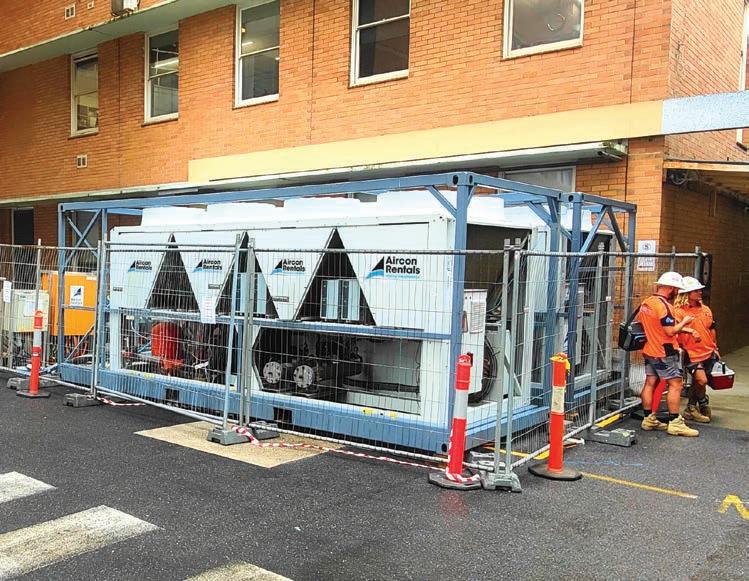


Short Term Rental Chiller Deployment During Planned Capital Equipment Repair Works
The Royal Melbourne Hospital, one of the largest health providers in Australia, were experiencing operational issues on a 1400kW water-cooled chiller that reticulates chilled water through the Melbourne Private Hospital building on the RMH Parkville site. In collaboration with the RMH Engineering Department, Aircon Rentals were tasked to evaluate, engineer, and deploy a short-term rental chiller solution so that repairs to the existing chiller could be completed as soon as practicable.
EVALUATION AND ENGINEERING
With the existing chiller and chilled water infrastructure located in a below ground plantroom, access to the chilled water piping and electrical switchboards presented some rigging and hydraulic challenges. Selecting the correct variable speed driven pumps, and flexible chilled water lines was a priority to ensure that the temporary system matched the pressure and flow requirements of the existing system. Planning for the installation, rigging, commissioning, and removal activities needed to provide minimal disruption to patient transport services and other hospital operations.
DEPLOYMENT AND INSTALLATION
By organising multiple flatbed crane truck deliveries in the early hours of the morning, Aircon Rentals experienced technicians were able to deliver and place the chillers & associated equipment into the laydown area safely and efficiently. Working closely with the RMH Engineering team, Aircon Rentals installed a total 120m of flexible chilled water lines and 160m of temporary electrical cables. The installation was completed successfully over a 2-day period.
“Aircon Rentals did an excellent job with the chiller installation and removal. From the time we first had their team onsite to the final removal, Aircon Rentals has been great to deal with. Their professionalism and can-do attitude have been spot on. The team was great, easy to deal with, and managed to install and remove their equipment with minimal fuss and impact to the day-to-day running of the hospital. Overall, a fantastic result by all involved.” — Royal Melbourne Hospital
COMMISSIONING AND OPERATION
The project evaluation and engineering was validated during the commissioning stage with the success of this stage relying on the collaboration between the Aircon Rentals site team and the RMH Engineering team, ensuring that the most important stage of the project went off without any issues. Once commissioning was complete, the temporary chiller system was placed into an automatic operating state, restoring chilled water flow to the Melbourne Private Hospital building.
DE-COMMISSIONING AND DE-MOBILISATION
Once the repairs to the existing 1400kW water-cooled chiller were completed, the cooling load needed to be gradually transferred from the temporary system in stages to verify the success of the repairs. Coordination between the RMH Engineering team, Aircon Rentals, and the RMH’s HVAC contractor, the transfer was completed without any major disruptions. The successful removal of the temporary chiller system required good planning with all logistic activities complete in the early hours of the morning.
SUMMARY
A successful project like this proves that expert planning and collaboration with all stakeholders can be completed in a timely, safe, and efficient manner with minimal disruption to hospital operations.
Project Highlights
• Project evaluation and engineering
• 1 x 430kW nominal + 1 x 520kW
nominal air-cooled rental chillers
• 2 x chilled water rental pumps with variable frequency drives
• 120m of flexible chilled water lines
c/w piping fittings and adapters
• 160m of temporary electrical cables
c/w pump and chiller switchboards
• Traffic Management – during installation and removal
• 6 x crane truck deliveries – during installation and removal
• Temporary Fencing
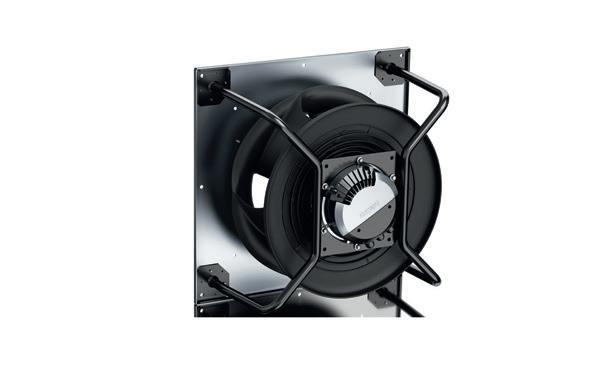
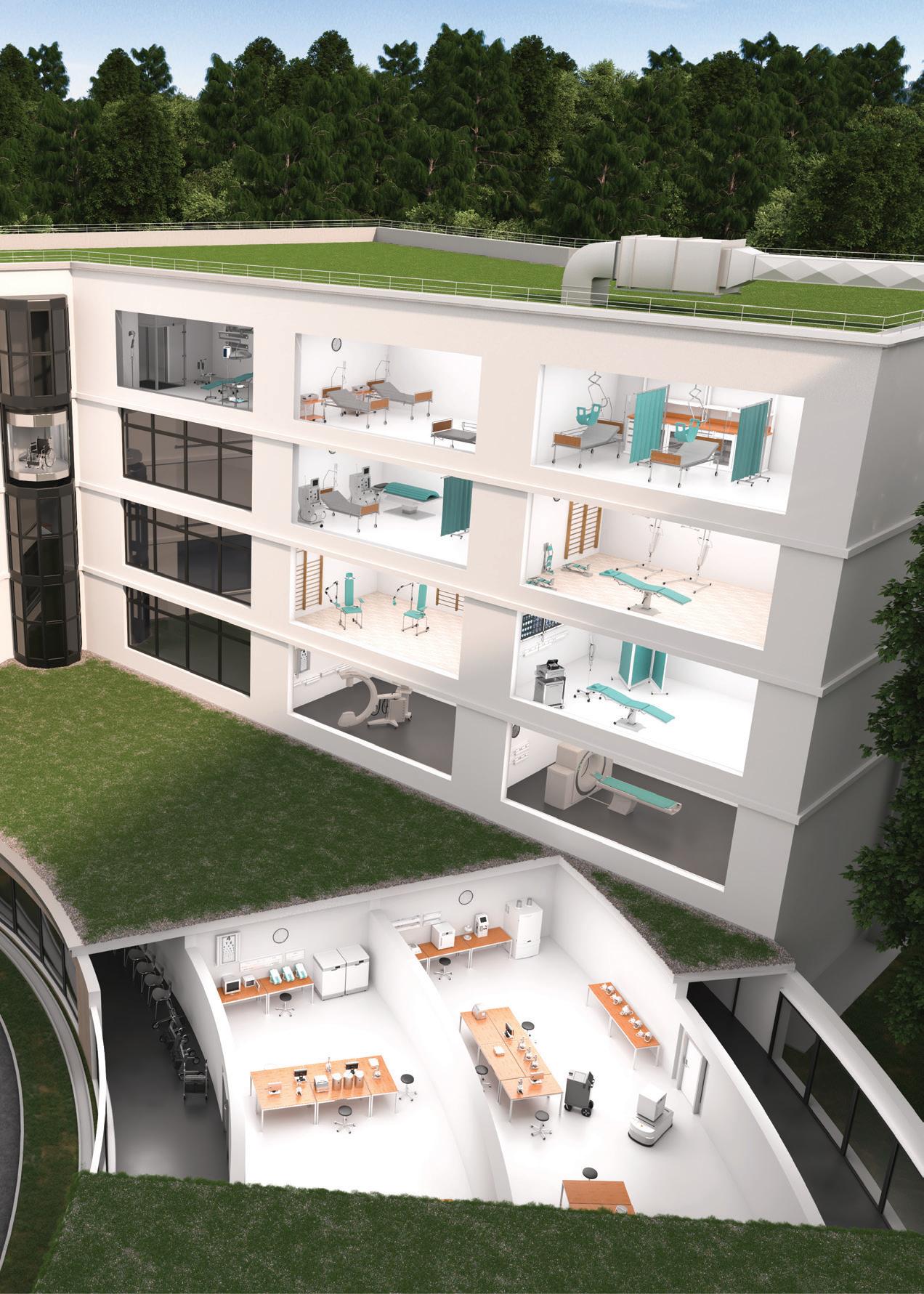
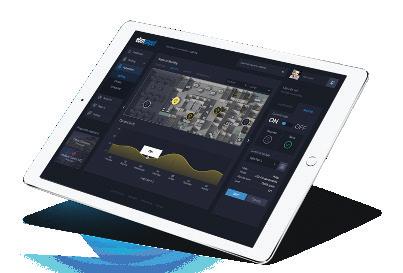
Reduce your energy costs and carbon footprint, enhance patient wellbeing with HVAC retrofits by ebm-papst A&NZ
ebm-papst is the world leader in the development and manufacturing of energy efficient EC fans. We will help you in reducing carbon footprint and operational costs, while improving your captital performance and indoor air quality (IAQ) for your patient’s wellbeing.
Ask us about our smart digital systems which enable integration of data into a single enterprise IoT platform, allowing facility managers and egineers to remotely monitor and control equipment and relevant IAQ parameters such as particulate matter, Co2 and volatile organic compounds (VOCs).
Contact
QUEENSLAND BRANCH REPORT
The year 2024 year is powering on, I hope everyone had a safe and happy Christmas, New Year and Easter! Every year brings new challenges and somehow the old ones never go away. In Queensland we have ongoing developments with big infrastructure projects, such as the Olympic Games, that will significantly impact on available resources for healthcare projects in the future, water quality issues such as heavy metals, and seasonal issues relating to HVAC systems as we come out of the humid months. The support and assistance that our engineering networks (such as those promoted by IHEA) is always invaluable in these situations, as we work with other stakeholders including our clinical colleagues.
Artificial Intelligence (AI) is also a growing area of interest in the health engineering field, whether it be in its potential to enhance control systems or to assist in analyzing data that informs our infrastructure management decisions. Even publicly available AI platforms are impacting our everyday and we can see evidence of this on the written material that comes across our desks.
New Members
I would like to welcome all members from Queensland that have joined recently. We look forward to catching up with you at our upcoming events and getting to know you.
Afternoon Professional Development Seminars
Special thanks to Vanessa Galina (IHEA Membership Services) for her ongoing support for registration and payment through the IHEA website and promotion of events. Use of the website has dramatically reduced the workload of the Queensland committee – please provide feedback to the committee on your experience using the online registration process for upcoming events.
We have had two Professional Development (PD) seminars since the last Journal, both at the Pineapple Hotel, Kangaroo

Point. The PD on Thursday 23 November was on the theme of “Water Quality, heavy metals, standards, solutions and learnings”. CETEC and Enware kindly sponsored the event and presented on developments in their fields– thanks to





Josiah Padget (CETEC) and Dale Brabazon (Enware) for their insights. Greg Jackson from the Queensland Health Water Unit also provided insights on the recent statewide metals sampling initiative and other water quality challenges. After the networking drinks and food, a small group went to the German Club in Woolloongabba for a Christmas breakup dinner.
On the Thursday 29 February, we held another well attended PD on the theme of “AI and ASSET Management”. Special thanks to Clevertronics, Bar-Tech and Automated Logic for supporting the event. Michael Duce (Clevertronics), Trevor Monaghan (Automated Logic) and Chris Schneider (Bar-Tech), supported by David Anderson (Flamel Engineering), provided their insights. This PD must hold the record for the longest ever question and answer time with a wide range of issues being raised by attendees (including impact on jobs)!
The committee is always looking for great ideas for PD themes – your feedback on this would be greatly appreciated and if you want to volunteer a colleague (or yourself) for a presentation, please get in touch with us.
Midyear Conference – Thursday, 18 July
Sustainable infrastructure that meets the ongoing needs of minimizing cost and environmental impacts, is future

proofed and adaptable for changing circumstances is a key issue. Along these lines, the theme for the Queensland midyear conference and tradeshow on 18 July 2024 is “Smart by Design: Pioneering Solutions for Future-Proofed Infrastructure”. The event this year is being held at the Brisbane Convention and Exhibition Centre. Please keep a look out for the information that will be forthcoming via emails and as published on the IHEA website. If you have an interest in this topic and would like to present, please get in touch.
Committee of Management
I am always greatly appreciative of the team and recently we welcomed Liam Duller to the Queensland Committee and thanks also to his colleague Linda Jordinson for her assistance in planning the midyear conference.
President
Vice President
Treasurer
Secretary
State National Board
Representative
Committee member
Committee member
Committee member
Committee member
Committee member
Committee member
Committee member
Danny Tincknell
Michael Campbell
Michael Ward
Josiah Padgett
Adrian Duff
Christopher Aynsley-Hartwell
Matt Smith
Arthur Melnitsenko
Mark Fasiolo
Mark Collen
Nic Coffey
Liam Duller
If you would like to communicate with the QLD Branch via email, please do so at ihea.qld@ihea.org.au
Looking forward to catching up with everyone at the midyear conference.
Danny Tincknell President, QLD BranchNSW/ACT BRANCH NEWS
On the 2nd of December 2023 the NSW/ACT Branch held a very successful Professional Development day at the Royal Prince Alfred Hospital focussed on the topic of “Resilience”, where we had a number of excellent speakers from different sectors of the healthcare engineering industry.
The event aimed to equip these professionals with the knowledge and tools necessary to strengthen the resilience of healthcare facilities in the face of extreme events. The discussions revolved around the importance of preparedness, staff capability, and critical infrastructure systems.
Jason Swindler and Chris Batch from Sydney Local Health District talked about their procedures and responses for a number of different situations that arise when running a health district. Real life situations and how to deal with them, whilst keeping the healthcare machine running.
This was a fantastic presentation and had many delegates in the audience from multiple health districts and private hospitals asking questions and offering their perspectives. This highlighted the benefit of these activities … so we can bring people together who experience similar issues and can share their ideas and experience.
We also had James Moyes and Manus Freeman from VA Science discussing the electrification of the healthcare industry, removing reliance on natural gas and replacing
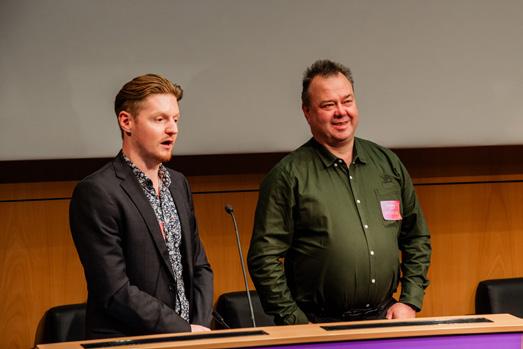
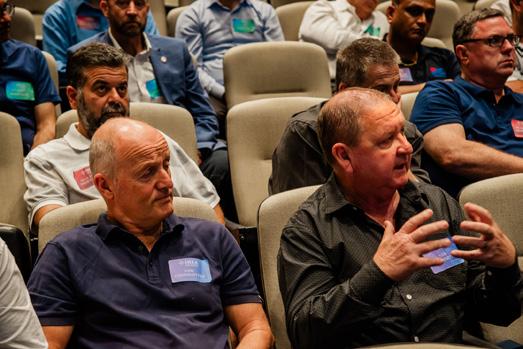
with electrical energy sources. This included a discussion on the pros and cons and expected investment needed to move this forwards. This topic is not going away any time soon, so if you need any support when questions arise, reach out to VA Science and they can help point you in the right direction.
Sven Nilsson, Disaster Response Unit manger form Sydney Local Health District discussed their resilience plan, including supporting the homeless, elderly and mental health patients in a time of crisis.
I would like to thank Anne-Louise Georgas and Meenal Sharma for going the extra mile in helping the committee to make this day a huge success.
After the presentations for the day at RPA, we headed down to Darling Harbour for a meet and greet on the lovely Eclipse Charter Boat for an evening cruise on the beautiful Sydney Harbour.
It was a fantastic afternoon, and excellent opportunity to catch up with fellow members and potential new corporate / individual members, and a superb way to wrap up 2023.
These days could not happen without our sponsors and I would like to thank
• Schneider Electrics for continued ongoing support and especially to Noel Clough and Nick Broadway from the energy monitoring team who answer many of our questions when it comes to energy issues.
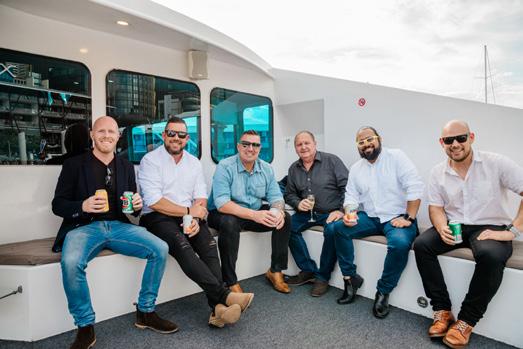




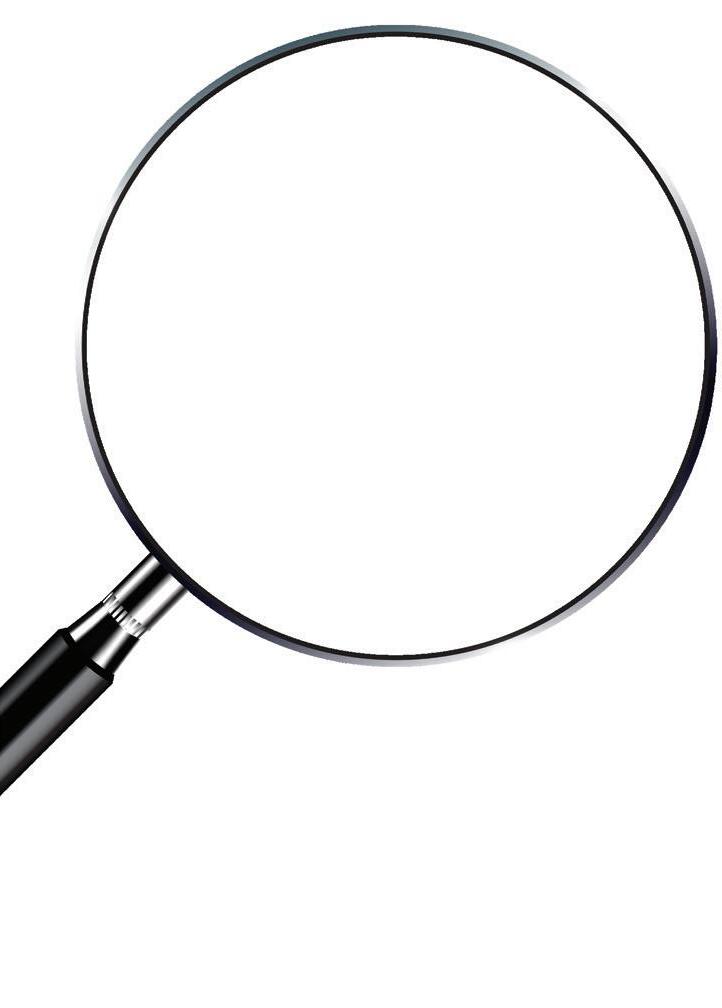
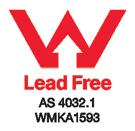
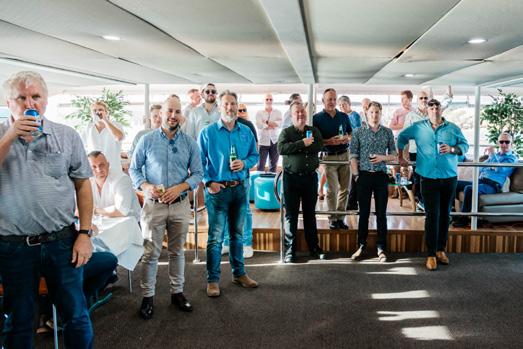
• Clevertronics, and I am definitely looking forward to their factory tour in Melbourne when we have our annual conference.
• Natural Power Solutions, JDC Flooring, Galvin Engineering, TLE Electrical Wholesalers, Caringbah, Altro APAC, Control my Building, and On Constructions – all of whom supported this event.
Moving forward our Branch is organising a charity golf day for Backpack beds for the homeless on the 9th of May at Ryde Parramatta Gold course. Details are on the IHEA web-site,

so please come along and meet up with other members for a good cause.
On the final note, I am looking forward to the annual conference in Melbourne in June and catching up with all the other members across the country.
See you soon
Cameron Ivers NSW/ACT Branch PresidentWe are the electricians of choice for healthcare facilities across WA.
From install & commission to certification & compliance, Foster’s Services is your turn-key solution. We
in delivering medical
services for public & private facilities
VIC/TAS BRANCH NEWS
Victoria / Tasmania branch are continuing the monthly ‘Lunch + Learn’ professional development sessions, these sessions are available on the IHEA website for members to catch up on after the event.
PAST BRANCH EVENTS
On Wednesday 14th February, Joel Anderson, and Louise Thompson spoke about AS/NZS ISO 45003 Managing Psychosocial Hazard Compliance in your workplace. In April 2023, important changes to Commonwealth work health and safety laws came into place, aligning Australia with the global ISO standards. For the first time, the Work Health and Safety Regulations 2011 prescribe how employers must identify and manage hazards and risks to workers’ psychological health and safety.
Mental health compensation claims are forecast to triple in the next 7 years, with workplace psychological injuries taking significantly longer to recover from and workers are more likely to require more extensive treatment. As a leader, being able to support your workforces’ psychological health
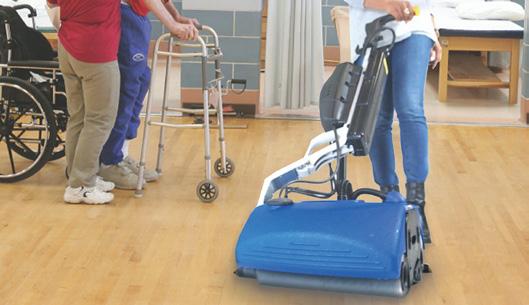

and wellbeing will not only ensure you meet your compliance responsibilities, but it will also improve workforce retention and performance.
On Wednesday 21st February, Sarah Bailey – ACIPC spoke about “Mould in the healthcare environment”, and provided an introduction to mould in the healthcare environment, how it gets there, and what you can do about preventing it and getting rid of it, and also appropriate responses to it in healthcare, based on risks to patients.
On Wednesday 20th March, Cleveltronics showed how they empower healthcare professionals with the knowledge and tools necessary to implement and uphold AS/NZS 2293:2018 standards effectively, fostering a safer and more secure environment for patients, staff and visitors within healthcare facilities.
UPCOMING BRANCH EVENTS
Wednesday 10th April 2024, Gregor Reise is an environmental scientist and occupational hygienist, with over twenty-five years’ experience in the waste management and recycling industry. Gregor gained a Masters in Occupational Hygiene and Toxicology from Edith Cowan University in 2018.


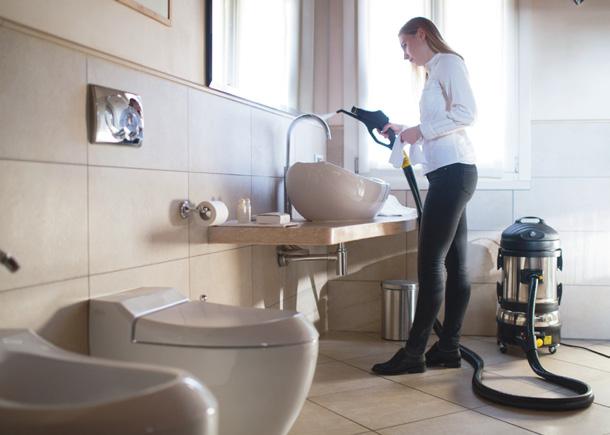


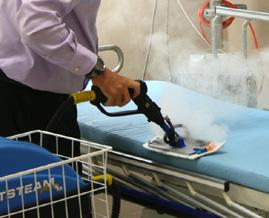
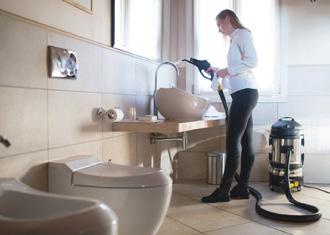


• Practical Training Event was devised with Gregor following feedback from members that they wanted some practical, hands-on training that made their job easier. The feedback was that they liked the technical/cutting edge sessions but missed having some day-to-day upskilling – hence the topic “Filter Selection”.
• Overview: The purpose of this session is a practical and robust training session that will allow healthcare engineering teams to answer the question “What filters should I install on my air handler?” the next time his/her mechanical engineers drops into their office.
Canvassing a combination of Eurovent technical specs and covering off on Australian guidance (DA15) and online air quality resources, this session is simple, clear and useful for all members of the Engineering team.
BRANCH NEWS
Registrations now open for IHEA 2024!
We are excited to extend an invitation to the highly anticipated 2024 National Conference, hosted by IHEA’s Victoria/Tasmania Branch. The Conference will be held from 3–5 June at Marvel Stadium, Docklands Melbourne.
This conference promises to be a dynamic gathering of industry leaders, innovators, and experts from around Australia. It will be a forum for exchanging ideas, fostering collaboration, and staying at the forefront of industry trends, enquiries via Icebergs (jodie@icebergevents.com.au)
STATE
BRANCH COMMITTEE OF MANAGEMENT AND CONFRENCE ORGANISING COMMITTEE
Branch President / National Board Member
COM / National Board Member
COM/ Treasurer
COM
COM
Michael McCambridge President, Vic/Tas Branch
Michael McCambridge
Julien Colangelo
Steven Ball
Rod Woodford
John Mihalinac
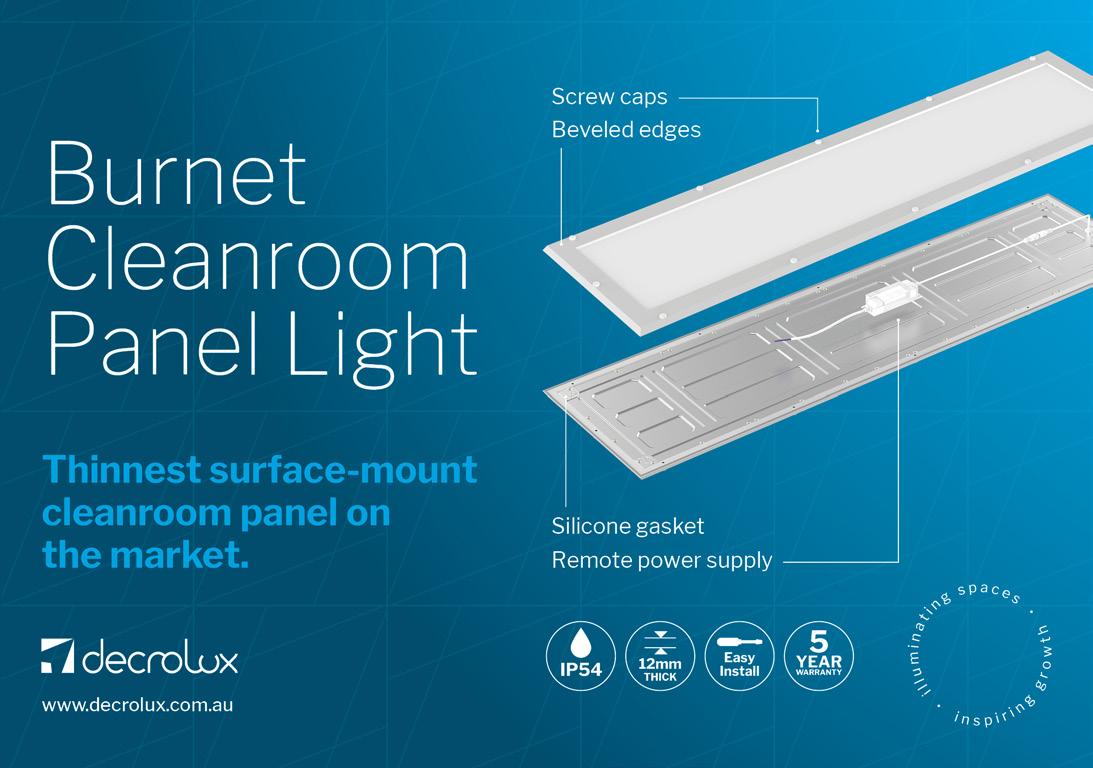
WA BRANCH NEWS
It is Summertime in Western Australia and strangely enough that phrase reminds me of one of the Ol’55 songs from their 1976 Take it Greasy album. It is funny how some things can trigger the most bizarre memories. Well, there was nothing funny about the start of the 2023 summer season in Western Australia. WA Summertime started early, with the last weeks of November presenting us with a heat wave of 38-degree plus days and severe hot dry easterly winds. A recipe for disaster and it did not disappoint. The Perth metropolis experienced one the worst wildfires in recent memory, the devastation in our northern suburbs was unimaginable and our thoughts go out to those directly affected. Closer to home on the day before our IHEA friend and supporter Ultramax Pipelines were due to host and present our November branch professional development meeting, they too experienced a devastating fire event with the destruction of their factory.
The Australian spirit is synonymous by communities coming together through adversity and this time was no different. When offered the opportunity to cancel or post pone, the Management of Ultramax would not hear of it. To them it was to be business as usual.
So, on the very hot evening of Thursday 23rd November 2023, 17 members and guests met at the John Loeke pavilion in the leafy western suburb of Nedlands, to hear Toby Hall present on the roles and responsibilities of Australian Standard 2896:2021 Medical gas systems in Health care facilities.
Toby’s presentation was interesting, informative and despite the noise of the numerous ceiling fans, generated a good amount of conversation and questions. With the main presentation done and dusted the group retired to enjoy a time of networking, finger food and soft drinks. From the conversations and feedback, I am pretty sure everyone took something valuable away.
Our sincere thanks must go to Ultramax general manager Matt, Stuart Lewsly, Toby Hall and to the whole Ultramax team for hosting such a good branch meeting and for putting the Australian spirit into action.
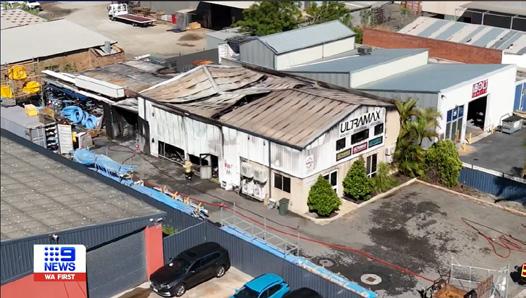
The last event for 2023 saw many members, partners, and guests assemble at the Whipper Snapper Distillery to celebrate what was a very busy year.
The tour took all of us through the history of the company, the distilling process with periodic tastings of the spirit and ending with a cocktail master class. Following, we all settled in for a light supper and some serious networking and reminiscing of the year gone.
One of my favourite tasks at this time of year is the presentation of our annual awards. The quality of the nominees this year was exemplary with each being worthy candidates. Following a rigorous review process the Committee finally decided the following;
2023 Engineer of the Year was awarded to Mr Andrew Waugh. Andrew is the Operational Support Engineer for Serco Asia Pacific Fiona Stanley Hospital and is an Electrical Subject Matter Expert. Andrew is a man who regularly demonstrates qualities such as leadership and management in every task he commits to. Andrew is an avid supporter of the IHEA, and for many years has been a sitting a Western Australian branch committee member and currently sits on the executive committee as WA’s State Secretary. Our congratulations go to Andrew.

2023 IHEA WA Volunteer of the Year is an award that recognises dedication and passion for Healthcare Engineering. The Volunteer of 2023 was awarded to Mr Steve Delides. Steve is Partnership Director of Ecosafe International and Principal Water Quality Consultant. Steve is always willing to contribute to the development of Healthcare Facilities Management’s knowledge in delivering high quality water supplies. His expertise is second to none however it is his openness to sharing

his wisdom that sets Steve well apart from his peers.
Congratulations Steve!
The Tradesperson of the Year is normally a keenly contested category and 2023 was no different. The high quality of the contractors who service our industry is something to behold, however only one out of the many candidates stood above the rest.
Trades person for 2023 was awarded to Mr Reece Kiriakidis, lead plumber for Snap Plumbing and Construction. Reece has earned the respect of all the Health Facility


Managers for his skill and dedication for his trade. Our congratulations go to Reece.
Apprentice of the Year is an award to recognise those up-and-coming trades people who have demonstrated passion for their chosen trade. The Apprentice of the Year for 2023 was awarded to Evan Smith. When researching this award, Evan’s employer Craig, the Director of Snap Plumbing and Construction told me of Evan’s extraordinary attitude, dedication, and passion for plumbing. These attributes were confirmed by my Healthcare Facility Management colleagues. Congratulations and well done, Evan.
As a side note, Reece and Evan were not able to attend our end of year celebration as they were both attending an emergency at a Perth Health Care Facility.




With smart planning and a KAESER heat recovery system, up to 96% of the energy input to an air compressor, blower or booster can be recovered and reused. The resulting heat output can be used for space or water heating, or for processes such as drying or cleaning.
Our compressed air specialists can advise you regarding the right design for your particular application. Call 1800 640 611 to book an appointment with one of our sales engineers.

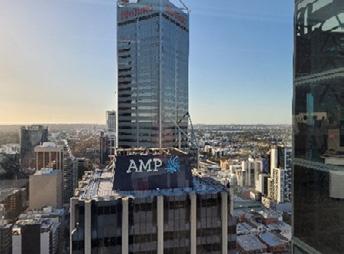
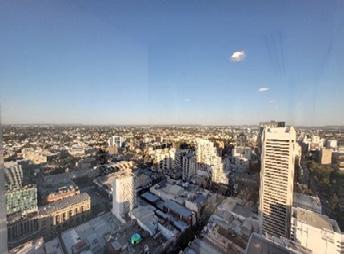






January is a time of rest and relaxation for our hard-working committee however as with all time off, it goes so fast and soon enough, we had February 2024 knocking on our doorstep.
Our first event for 2024 rose to new heights, literally! 45 members and guests met on the 38th floor of 108 St Georges Terrace in the offices of Lucid Consulting.
The views from this level are breathtaking, especially for those of us who are normally restricted to the ground floor, or lower!
I did ask my director for an office with a similar view, and I was promptly told to move my desk to the roof, it is hardly the same!
Mr Nick Adcock, Health Director presented on how the Lucid Consultants and Specialist Subject Matter Experts approached the design criteria of the New Women’s and Childrens Hospital being designed in Adelaide, South Australia. For those who attended the National Conference in May last year will recognise this project especially the public spaces and playgrounds. These are rumoured to be the best in Australia.
Mr Alex Corner, Health Sector Lead presented Lucid Consulting’s approach to upgrading Western Australian Mental Health facilities and services. Their architectural design reflected the changes in accommodating mental health patients. The move from stark prison-like facilities to a welcoming environment is clearly a move in the correct direction.
The soft furnishings and fittings are designed to comply with anti-ligature requirements and the subdued dimmable
lighting is specifically designed to minimise flicker. Lighting flicker, even subliminal has been associated with psychotic episodes in some patients. This new take on mental health care is a welcome improvement.
The IHEA WA Committee wishes to thank Lucid Consulting for hosting such a brilliant evening.
Moving forwarded to March 14th, we had our first double header for 2024.
Members and guests met at the Queen Elizabeth II Medical Centre to hear representatives from Linksafe present their take on Using Digital Media to Manage your Contractor WHS Obligations.
Our thanks go to Mr David Erczmann, Mr Troy Morgan, Mr Luke Bremner, and Ms Celine Ronce for the monumental efforts they went to in coming to Western Australia to be with us.
Following on, our members heard from Ms Karen Ziegelaar from the WA Department of Health Licensing and Regulatory Unit (LARU) and Mr Alex Rogers from Norman Disney & Young present an overview of the impending changes to the Western Australian Engineering Guidelines for Health Care Facilities.
When the draft is released for public comment, and following a short time to digest the content, the IHEA WA will reconvene in mid-June to host a workshop to discuss the changes and the impact in detail. Our intention is to submit a response to LARU on behalf of the WA Healthcare Facility Managers.
The Linksafe and the Western Australian Engineering Guidelines for Health Care Facilities presentations and works shop deserve more space than what is available so I will leave those details for our Winter journal.
Kind Regards
Fred Foley Vice PresidentOUR VISION
OUR VISION
To be Australia’s most forward thinking, agile and influential engineers and asset advisors.
OUR VISION
To be Australia’s most forward thinking, agile and influential engineers and asset advisors.
To be Australia’s most forward thinking, agile and influential engineers and asset advisors.
Lucid operate a national and dedicated Health Sector specialisation. Our offering includes;
Lucid operate a national and dedicated Health Sector specialisation. Our offering includes;
Engineering a better way for a better world
To be Australia’s most forward thinking, agile and influential engineers and asset advisors.
• Asset Management, Auditing and Compliance Upgrades
• Asset Management, Auditing and Compliance Upgrades
• Building Engineering Services Infrastructure Sustainment & Refurbishment
• Building Engineering Services Infrastructure Sustainment & Refurbishment
Lucid operate a national and dedicated Health Sector specialisation. Our offering includes;
Lucid operate a national and dedicated Health Sector specialisation
Our offering includes:
– Engineering Services Design & Delivery
• Clinical Sustainment & Refurbishment
• Asset Management, Auditing and Compliance Upgrades
• Major Capital Works Projects
• Project Management
• Building Engineering Services Infrastructure Sustainment & Refurbishment
• Clinical Sustainment & Refurbishment
• Major Capital Works Projects
• Project Management
– Asset Management, Auditing, Sustainment & Compliance
– Hospital Infrastructure Advisory
– Decarbonisation & Electrification
– Sustainability

OUR VISION be Australia’s most forward thinking, agile and influential engineers and asset advisors.

Engineering a better way for a better world.
Engineering a better way for a better world.
www.lucidconsulting.com.au
www.lucidconsulting.com.au
Please
Engineering a better way for a better world.
www.lucidconsulting.com.au
www.lucidconsulting.com.au
Please direct Project Enquiries to Nick Adcock, Director – Health nick.adcock@lucidconsulting.com.au | 0431 006 445
Please direct Project Enquiries to Nick Adcock, Director – Health nick.adcock@lucidconsulting.com.au | 0431 006 445
Western Water Solutions + Flowio
Western Water Solutions has partnered with Flowio to deliver Sustainable Building Solutions for commercial and healthcare facilities’ heating and cooling systems.
Our technologies increase asset dependability and performance while lowering operating costs via reduced maintenance, reduced chemical use, and water and energy savings.





Western Water Solutions is a solutions-based company that has a strong focus on customer excellence.
Engineering a better way a better world.
www.lucidconsulting.com.au
We aim to provide an unparalleled experience to each and every client.
direct Project Enquiries to Adcock, Director – Health nick.adcock@lucidconsulting.com.au | 0431 006 445
Phone: 0400 704 115
www.westernwatersolutions.com.au

We are excited to extend an invitation to the highly anticipated 2024 Conference, hosted by IHEA’s Victoria/Tasmania Branch. The Conference will be held from 3 - 5 June 2024 at Marvel Stadium, Docklands Melbourne.



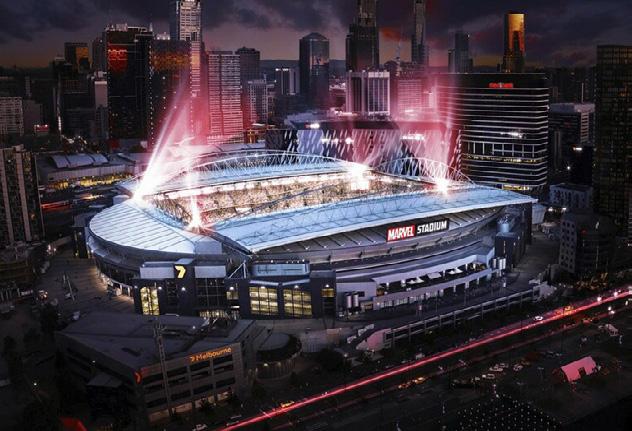
WHY ATTEND?
This conference promises to be a dynamic gathering of industry leaders, innovators, and experts from around Australia. It will be a forum for exchanging ideas, fostering collaboration, and staying at the forefront of industry trends.
• Gain insights from renowned keynote speakers.
• Engage in interactive presentations and panel discussions.
• Network with peers and potential partners.
• Explore the vibrant culture of Melbourne.
DESTINATION
Melbourne is undisputedly the knowledge and cultural capital of Australia where creativity and innovation come together to deliver great business events, inspiring places to explore and cuttingedge advancements that are globally acclaimed.
A city where the world’s brightest minds gather to inspire, innovate and deliver real change in worldleading research and development.
THE VENUE - MARVEL STADIUM
Located in the heart of Melbourne, Marvel Stadium has welcomed more than 42 million fans through the gates since opening in 2000.

REGISTRATION DETAILS
Early Bird Member Registration: $1,090 Regular Registration: $1,200
Registration includes an extensive social program including pre-conference networking, trade evening drinks and gala dinner and will provide real opportunities for you to connect with facility managers and product/service providers.
Register now via www.iheaconference.com.au
With its vibrant, multicultural population, temperate climate and outstanding quality of life, Melbourne is an ideal destination for the 2024 IHEA National Conference.

Renowned for regularly staging AFL and BBL action under the famous retractable roof, Marvel Stadium has also hosted some of the biggest international sporting events such as UFC, Soccer World Cup Qualifiers, International Rugby Union tests and USA Basketball versus Australian Boomers in 2019.
Throughout its years, Marvel Stadium has hosted many memorable concerts for some of the world’s biggest stars including U2, Ed Sheeran, Taylor Swift, Foo Fighters, Justin Timberlake, AC/DC, Bon Jovi, Andre Rieu and Eminem.
CONFERENCE HIGHLIGHTS
Behind-the-scenes technical site tours
Our popular technical tour program will be held on the afternoon of Monday 3 June. Choose from one of the following options, included with all full registrations:
Technical Tour 1 – Clevertronics Factory
Technical Tour 2 – Marvel Stadium
Technical Tour 3 – New Footscray Hospital
Technical Tour 4 – Swinburne University Factory of the Future

INTERNATIONAL KEYNOTE SPEAKERS



James Hird

James Hird is a retired Australian rules footballer and the former longserving captain of the Essendon Football Club. Since retiring, he has embarked upon an extensive media career. Through his role with Fox Sports Footy, he has forged a reputation as an insightful special comments expert during game coverage, and as a well-researched and articulate analyst on programs such as On the Couch.
One of the all-time legends of the game, he was the joint winner of the 1996 Brownlow Medal, and a member of Essendon’s 1993 and 2000 premiership winning sides.
Yasmin Grigaliunas
Yasmin Grigaliunas is a Director and Founder of the award-winning circular economy enterprise, the World’s Biggest Garage Sale (WBGS). An entrepreneur of impact and a circular economy pioneer in Australia, Yas recently closed a $4M equity capital raise to expand nationally, with Officeworks as a key investor and shareholder. Together, through expansion of reuse, repair, resource recovery and recommerce initiatives, Yas is thrilled to work with partners and investors to bring the next phase of growth, seeing her Circonomy vision come to life.
MC - Mike Larkan
Mike Larkan has spent more than 30 years working in the media in TV, radio and newspaper in the capacity as a producer, presenter, journalist and reporter in Sydney, Canberra & Melbourne newsrooms. For the past 25 years, Mike Larkan’s outgoing personality and talent has made him a household name as the nightly weatherman for TEN News. Mike is proud to be among the select few in the community who are Australia Day ambassadors. He is also an ambassador with the Variety Club, Melbourne Zoo & The Lost Dogs Home plus a keen supporter of numerous charities.
SOCIAL PROGRAM
WELCOME RECEPTION
Date: Monday 3 June
Location: Exhibition Area, Victory Room, Marvel Stadium
Time: 5:30PM - 7:30PM
Dress: Smart Casual
Tickets to the welcome reception are included in full registration tickets. Extra tickets can be purchased for day only registrations and accompanying partners via the online registration process.


CONFERENCE DINNER
Date: Tuesday 4 June 2024
Location: The Medallion Club, Marvel Stadium
Time: 6:30PM – 10:30PM
Dress: Cocktail attire
Boasting a 65-metre outdoor balcony with unobstructed views over Victoria Harbour, the Medallion Club is the perfect venue for the 2024 IHEA National Conference Dinner.
All full registrations include a ticket to the Conference Dinner. Extra tickets can be purchased for extra exhibitor staff registrations, day only registrations and accompanying partners via the online registration process. Enjoy a three-course meal, entertainment and connecting with old and new associates.
SPONSOR & EXHIBITOR OPPORTUNITIES ARE STILL AVAILABLE!
Sponsoring or exhibiting will provide an excellent opportunity to promote your organisation and to maintain a high profile within the Health Industry. Visit www.iheaconference.com.au to view the available opportunities.
CONTACT THE CONFERENCE ORGANISERS
Iceberg Events
Phone: +61 7 3876 4988
Email: mika@icebergevents.com.au
For more information, please visit www.iheaconference.com.au

CONFERENCE PROGRAM
DAY ONE: MONDAY 3 JUNE 2024
1.00pm Clevertronics
2.00pm All other tours
Optional Technical Tours
Tickets required. Delegates must have pre-registered for a technical tour.
Technical Tour 1 - Marvel Stadium
Technical Tour 2 - Clevertronics Factory (NOTE EARLY DEPARTURE TIME OF 1.00pm)
Technical Tour 3 - New Footscray Hospital
Technical Tour 4 - Swinburne University Factory of the Future
5.00pm - 7.30pm Registration Desk Open for Welcome Reception
Location: Victory Room Foyer, via Gate 9
5.30pm - 7.30pm Welcome Reception
Location: Victory Room, Marvel Stadium
Dress: Smart Casual
DAY TWO: TUESDAY 4 JUNE 2024
7.00am - 5.00pm Registration Desk Open Victory Room Foyer, Marvel Stadium
ALL CONFERENCE SESSIONS WILL BE HELD IN VICTORY ROOM D, MARVEL STADIUM
8.30am Welcome To Country
Wurundjeri Woi Wurrung Cultural Heritage Aboriginal Corporation
8.40am Official Conference Opening & Housekeeping
8.45am Official Conference Address
Victorian Health Department
9.00am Official Conference Address
Victorian Health Building Authority
9.15am IHEA National President Address
Darryl Pitcher, IHEA
11.00am Sustainable Healthcare Facility Management: Insights from an Asset Lifecycle and Maintenance Benchmarking Study
Dr Seyed Safi | Covaris Pty Ltd
11.20am Energy Efficient HVAC in Healthcare: An EC Fan Retrofit Case Study
Mr Patrick Pleta | ebm-papst A&NZ
11.40am The Sustainable Hospital: Holistic Guidance by Engineers, for Engineers
Mr Rob Aldrich | Verdeos by Grosvenor Engineering
12.00pm IHEA Annual General Meeting
12.00pm - 1.30pm Lunch & Exhibition Extended lunch break due to AGM
SESSION TWO
1.30pm RO Water Systems: Improving Compliance and Plant Life is the Sustainable Choice
Ms Suzanne Manley | Wood
1.50pm So, You Want to Swap Gas for Heatpumps...
Mr Simon Witts | VA Sciences
2.10pm Holistic Systems Approaches to Lean Healthcare
Ms Grace Kennedy |Acmena Group
2.30pm Optimizing Energy Savings in Operating Theatres and the Key Considerations for Successful Implementation
Mr Cole Krisko | Holyoake by Price
2.50pm What is a Healthy Hospital and Why We Need More of Them
Mr Jack Noonan | International Well Building Institute
www.iheaconference.com.au
CONFERENCE PROGRAM
3.10pm - 3.40pm Group Photo of IHEA delegates / Afternoon Tea & Exhibition
SESSION THREE
3.40pm Practical Approach to Achieving Net Zero in Health Care
Mr Alex Sejournee | Hfm Asset Management / BGIS
4.00pm IoT Sensors Implementation – Lessons Learnt
Mr Pablo Perez-Reigosa | Ventia
4.20pm Tackling The Net Zero Challenges (UK)
Ms Alison Allan| Micad Australia
4.40pm Conference Sessions Conclude
6.30pm - 10.30pm Conference Dinner
Location: Medallion Club, Marvel Stadium
Sponsored by Enware
DAY THREE: WEDNESDAY 5 JUNE 2024
8.30am - 3.15pm Registration Desk Open Victory Room Foyer, Marvel Stadium
9.00am Welcome & Housekeeping
9.05am Gold Sponsor Address: Alerton
9.15am KEYNOTE ADDRESS Yasmin Grigaliunas
10.15am - 10.45am Morning Tea & Exhibition
SESSION FOUR
10.45am Introduction of ISO16890 Filter Standard in Australia - What do Hospital Engineers Need to Know?
Mr Gregor Riese | Opira Group
11.05am Emergency Management and Procedures in a Large Healthcare Facility – Beyond the Red and Orange!
Mr Octo Moniz | Royal Perth Hospital
11.25am Compliant Solutions for Energy Savings in Low-Risk Areas of Medical Facilities
Mr Ben Gill | Plasma Shield Ltd
11.45am A Holistic Approach to Energy Efficiency and Electrification
Andreas Moelsted | Steensen Varming (Australia) Pty Ltd
12.05pm Fluid Flexibility: Navigating Healthcare Flood Response
Mr Jamie Jacobi | VA Sciences
12.25pm - 1.25pm Lunch & Exhibition
SESSION FIVE
1.25pm Sustainable IoT Infrastructure Considerations for SMART Buildings
Mr Gary Gilbert | Wesco Anixter
1.45pm Sustainable Health Systems supported by Digitalized Reliability Assessments
Mr Rajevan Manick | Downer Spotless
2.05pm Optimised Water Flushing Programs: Minimising the Waste Whilst Still
Maintaining Water Quality
Mr Steven Delides | Ecosafe International
2.25pm The Nexus Between Healthy and Sustainable Design
Mr Warren Li | Lci Consultants
2.45pm Illuminating the Path to Sustainability: Integrating Environmental Responsibility with Emergency Lighting Management
Mr Michael Goodman | Clevertronics
3.05pm 2025 Conference Presentation
3.10pm Conference Close & Prize Draws
3.30pm Conference Sessions Conclude
This program is an outline only and the organisers reserve the right to change the topics, times and presenters if necessary. For the most up-todate version of the program, view the conference website www.iheaconference.com.au
We specialise in HEALTHCARE
Shaping the Future of Healthcare Facilities with Smart, Sustainable Design

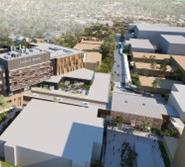



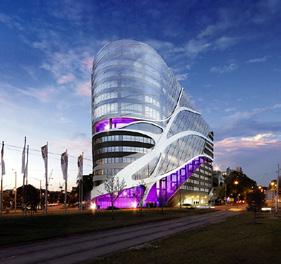

FUTURE READY & SUSTAINABLE DESIGNS Design
TRUSTED EXPERTISE - PROVEN TRACK RECORD OF EXCELLENCE & RELIABILITY nable Design
COST -EFFECTIVE, VALUE DRIVEN SOLUTIONS ABL e Design





AN INTRODUCTION TO FILTER CLASSIFICATIONS USING THE ISO 16890 STANDARD
Navigating the new ISO/AS16890 filter standard and knowing what is being installed in your HVAC system
Gregor Riese, Director Opira Group
Introduction
Standards Australia is in the process of replacing the AS1324 filter series, with the replacement of the existing G1-G4 and F5 - F9 filter classifications with the ISO 16890 series (Figure 1).
While at first glance, the new filter classification method appears far more complicated to apply, the new rating system is an improvement as it better reflects the actual filter performance and will help to ensure adequate protection from airborne particulates for occupants of health facilities. The adoption of the ISO 16890 series does not affect the Australian HEPA filter standard (AS4260) used to filter air for surgeries and areas in the hospital with immunocompromised patients.
Understanding particle size
The rationale behind the new filter classification method is to better/ more accurately define the particulates arrested by the filter. The old classification scheme, while simple, would give no estimate of particulate arrestance, and users would need to look up the standard to try to understand how effective these filters are. There is nothing intrinsically informative about an F5 filter vs an F9 filter and what a user could expect in terms of cleaning air.
The new filter classification method describes the particulate arrestance of the filter that is specified. An ISOePM2.5 65% has been tested to remove 65%
of PM2.5 particulates (ie particles smaller than 2.5 microns). The same filter will remove a higher proportion of PM10 particulates but a lower proportion of PM1 particulates. The selection of this particulate size range by ISO 16890 is deliberate since these smaller “respirable particles” (10µm or smaller) embed deep in the lungs.
Exposure to PM2.5 particulates has been linked to heart disease, stroke, lung cancer, chronic lung disease, and respiratory infections.1 Figure 2 shows how particulate penetration in the lung varies based on particle size.
The soon to be published ISO/AS 16890 classification method challenges a filter with 12 different particle sizes in the 0.3µm to 10µm size range. For reference, a fine human hair is between 50 – 70µm in size while respirable dust is generally so small to be invisible to the naked eye (Figure 3). The smallest particle tested (0.3µm) is in the pathogen size range and typical of the size of many smaller bacteria while the largest particle (10 µm) is typical of smaller dust particles, pollen and mould.
How the new classification scheme works
For a filter to be classified in accordance with the ISO 16890 method, it needs to capture at least 50% of one of the three main particulate classes: ePM1, ePM2.5 or ePM10. The “e” denotes
the efficiency of the filter to that size category of particle. The ISO/AS 16890 standard will also have a fourth category called ‘Course filters’ for these filters which do not meet a minimum ePM10 arrestance of 50%. For example, if a tested filter only captures 40% of the ePM10 particles, then it can be classified


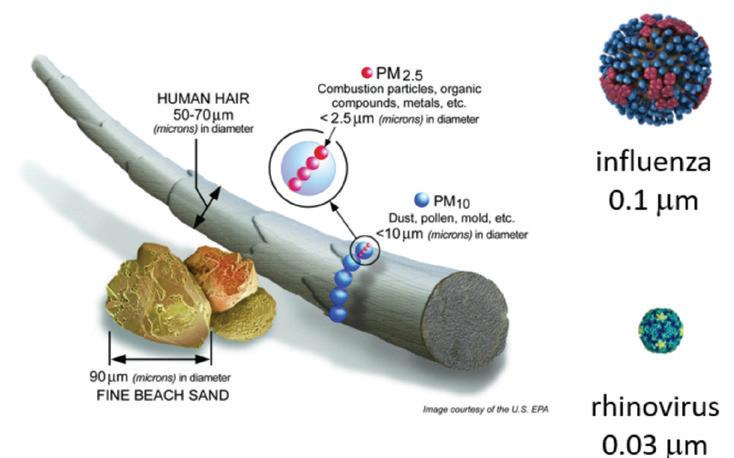
as a “PM Coarse 45%” filter. Course filters are not recommended for most HVAC applications.
Figure 4 seeks to give a visual representation of this filter classification method. Once a filter has achieved the 50% arrestance threshold in that particulate category, it will be specifically classified in terms of its % arrestance of the particle size range (ie
ePM1, ePM2.5 or ePM10). This is denoted as a % arrestance in 5% increments –for example “ePM1 55%”. The application of the correct ISO filter classification based on particle arrestance is illustrated in Figure 5. Following testing, these commercially available filters achieved the following % arrestance for the particulate sizes ePM1, ePM2.5 and ePM10. The final ISO 16890 classification is expressed as a % of the finest particulate captured at an arrestance rate of >50%. For example, a filter capturing 71% ePM1 will be classified as a “ePM1 70%” filter. Three other examples highlighted in the figure are described below:
• The DriPak SX M6 is classified as an ePM10 65% and arrests 65% of the ePM10 particles but a lower percentage of the ePM2.5 and ePM1.
• The DuraVee DVHXL95 is classified as an ePM1 70% and arrests 71%
Control My Building is a trusted Building Automation System Integrator serving the Sydney region for over 8 years. We provide solutions for optimisation and control of Air Conditioning systems for commercial buildings, warehousing, retail, education and health care. We have extensive knowledge and experience in the supply, installation and commissioning of controls and monitoring of clean rooms, isolation rooms, PC2 labs, PC3 labs, theatres and other critical area.
We are trusted partners for Siemens, EasyIO and Distech Controls and working with our mechanical electrical team we can provide a turnkey solution for your needs. Our services include, but are not limited to, the following:
• Service and maintenance of the Siemens, EasyIO, Distech and Niagara products
• Supply, installation and commissioning of new BMS hardware including Siemens Desigo CC, EasyIO Niagara N4 and Distech Niagara N4
• Supply, installation and commissioning of variable speed drives
• Mechanical electrical works including supply and installation of mechanical services boards
• Preventative maintenance works of building automation equipment and VSD’s
Phone 0402 365 698 or visit
www.controlmybuilding.com.au








of the ePM1 particles and a higher percentage of the ePM2.5 and ePM10.
• The HydroVee HV95 is classified as an ePM1 50% and arrests 54% of the ePM1 particles and a higher percentage of the ePM2.5 and ePM10.
An example of a typical filter label applying the ISO 16890 classification is show in Figure 6. This filter installed in an air handler, is an ePM2.5 70% filter. This grade of filter is typically used in commercial offices in urban areas.
Choosing the right filter for your HVAC system
Selection of the right filter for the HVAC systems in your hospital depends on the specific requirements for the facility and the quality of the outdoor air where you are located. This topic will be tackled in a future Healthcare Engineering articles, however some excellent on-line guidance is available in the following publications:
Eurovent 4/23 – 2022 Selection of EN ISO 16890 rated air filter classes for general ventilation applications. Fourth Edition https://www.eurovent. eu/publications/eurovent-4-23-2022-
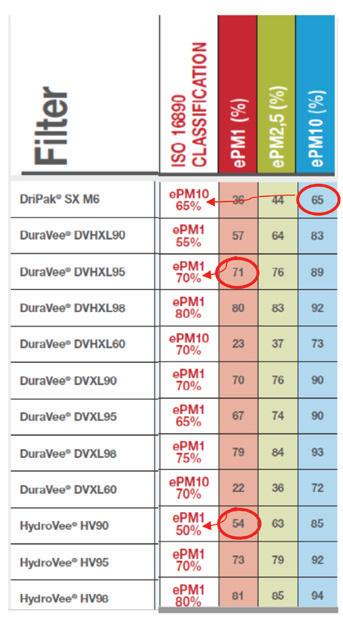
selection-of-en-iso-16890-rated-airfilter-classes-fourth-edition-english/
The Australian Institute of Refrigeration, Air Conditioning and Heating (AIRAH) publication Design Application Manual 15 - Air Filters and Cleaning Devices – Selection and Application https://www.airah. org.au/Web/Web/Shop/Item_Detail. aspx?iProductCode=DA15
The transition to the ISO 16890 standard will occur over a 2-year period commencing from mid-2024 with the publication of the AS/ISO edition of the standard by Australian Standards. Until
then, the AS1324 filters classification will continue to be used by commercial suppliers as we transition to the new system. Hospital engineers and their mechanical contractors should become familiar with the new ISO classification scheme as filter manufacturers and suppliers transition to the new standard.
Disclosures: Opira is an Australianbased supplier of filtration, UV and disinfection technologies servicing the healthcare and pharmaceutical sectors This article was written by a human being. The author can be contacted at gregor@opira.com.au

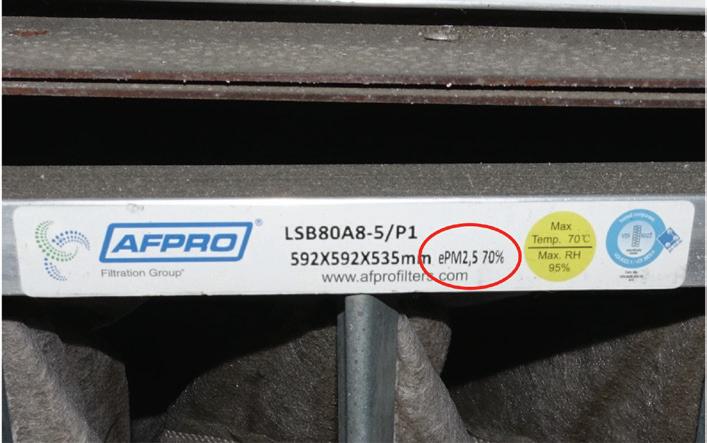

Find out how our specialised solutions prioritise indoor air quality and energy optimisation for the healthcare sector. With advanced monitoring and control capabilities, we enhance air quality, prevent pathogen spread, and improve energy efficiency. Reduce

Unlocking the Future of Healthcare: Revolutionary Compressed Medical Air System at Westmead Hospital
In a groundbreaking leap for Healthcare innovation, Westmead Hospital is now home to a state of the art Compressed Medical Air System and a newly built stand alone plant room, a turnkey project meticulously executed by Goldman Plumbing Services, redefining the standards of medical infrastructure.
Technological Advancements for Seamless Integration
With the project's design parameters set and overseen by Crowley Consulting, Goldman Plumbing's Engineering team has not only replaced but transformed the compressed medical air system at Westmead Hospital. The result is a cutting-edge system that flawlessly integrates functionality and efficiency, signalling a new era in Healthcare infrastructure. Importantly, this transition occurred seamlessly with the new system installed and commissioned without any disruption to the Hospital's Compressed Medical Air supply.
Reliability and Redundancy
The system boasts four Medical Compressed Air Compressors complete with advanced heat of compression dryers, featuring two water-cooled and two air-cooled compressors, ensuring 100% redundancy. This combination guarantees a continuous and dependable supply of medical compressed air.
Sustainable Healthcare Infrastructure
With a firm commitment to sustainability, the chosen Atlas Copco ZT37VSDFF generators incorporate variable speed drives, unlocking energy savings of up to 50%. Integrated heat recovery features contribute to eco-friendly operations by utilising up to 94% of compression heat for drying the desiccant filters, eliminating the need for additional energy sources
Automated Efficiency Systems
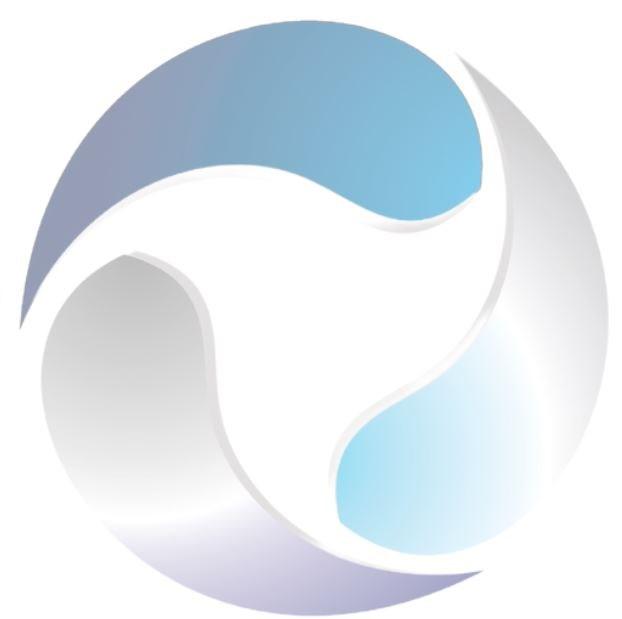

The design incorporates a fully automated room ventilation and compressor cooling system. The systems control panel regulates fan usage based on operational room temperatures, optimising energy consumption for maximum efficiency and cost-effectiveness.
Advanced Monitoring and Alert Systems
A dedicated Medical Air Alarm System receives digital signals from compressors and pressure sensors, promptly alerting system operators to any critical alarms or warnings. Real-time insights into operational parameters are provided through Building Management System connectivity with high level interface.
Resilient Design for Unmatched Reliability
The Medical Compressed Air Plant and Mechanical Services control centre comprises four individual modules, showcasing a commitment to reliability. Each module is dedicated to supplying specific plant and equipment, allowing the system to fully operate during maintenance periods or partial system failure.
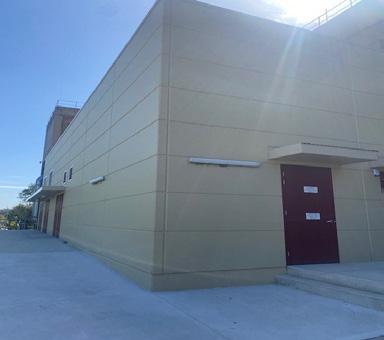
Holistic Approach to Project Success
Goldman Plumbing's holistic approach extends beyond the medical compressed air systems design and installation. Goldman Plumbing also designed and constructed the dedicated stand alone plant room. Not only does this approach provide a single point of accountability for the entire project, it also ensures seamless translation of the systems design intent into fully functional and reliable Healthcare infrastructure.
Excellence in Compliance
The Compressed Medical Air System not only meets but surpasses all relevant Australian Standards and modern Healthcare facility expectations. This project signifies a stride towards excellence in medical facilities, where innovation meets reliability and the future of healthcare infrastructure is now a reality.

WATER QUALITY MANAGEMENT IS MORE THAN LEGIONELLA CONTROL – CHEMICAL AND OTHER PATHOGEN RISKS
Ecosafe International
Since the initial identification of Legionella pneumophila in 1977, following an outbreak of pneumonia in the USA, there has been widespread recognition that this species of bacteria can be a serious cause for concern in water distribution systems (Mondino et al., 2020). In some cases, Legionella has become the sole focus of water risk management strategies, particularly in healthcare settings where immunocompromised patients are indeed more susceptible to Legionellosis. However, it is important to recognise that a robust approach to water risk management is wider than just Legionella control. For example, other opportunistic premise plumbing pathogens (OPPPs), such as Pseudomonas aeruginosa and nontuberculous mycobacteria (NTM) as well as potential chemical risk factors should also be considered. The implementation by facilities of a holistic approach to water quality management will help to improve stakeholder confidence that all risks are being appropriately addressed.
Opportunistic premise plumbing pathogens (other than Legionella)
Premise plumbing, which is considered the portion of the drinking water distribution system beyond the boundary point at which the municipal water is supplied to a facility, has a number of unique characteristics that may specifically select for certain microorganisms. Typical “features” of premise plumbing include high surface area to volume ratios, reactive pipe materials, warm temperatures, minimal organic carbon, low or no disinfection residuals and frequent stagnation of water in certain areas (Feazel et al., 2009; Falkinham, 2015; Leslie, Hinds and Hai, 2021)some of potential concern to human health. In this study, we used culture-independent technology to investigate the microbial composition of biofilms inside showerheads as ecological assemblages in the human indoor environment. Showers are an important interface for human interaction with microbes through inhalation of aerosols, and showerhead waters have been implicated in disease. Although opportunistic pathogens commonly are cultured from shower facilities, there is little knowledge of either their prevalence or the nature of other microorganisms that may be delivered during shower usage. To determine the composition of showerhead biofilms and waters, we analyzed rRNA gene sequences from 45 showerhead sites around the United States. We find that
variable and complex, but specific, microbial assemblages occur inside showerheads. Particularly striking was the finding that sequences representative of non-tuberculous mycobacteria (NTM. These “features” may also provide favourable conditions for specific organisms to thrive, facilitating higher survival and growth rates. Whilst not usually harmful to the general population, infection by these organisms can be life-threatening, particularly those individuals with already compromised immune systems. This ability to thrive in premise plumbing, with the potential to cause disease, has resulted in such organisms being collectively termed opportunistic premise plumbing pathogens (OPPPs) (Falkinham, 2015).
Perhaps the most prevalent and well known OPPPs are members of the Legionella species. These bacteria are well adapted for growth in premise plumbing, particularly as a result of their ability to grow within biofilms and amoebae hosts, both of which may serve as additional layers of protection from disinfectants (Berjeaud et al., 2016). Legionella species are also the causative agent of the potentially lethal Legionnaires’ disease, with a 4% mortality rate for reported cases of legionellosis in Australia in 2014 (of those cases where mortality data was available). 46% of these deaths were found to be due to Legionella pneumophila, the waterborne pathogen (NNDSS, 2015). Legionella is undoubtedly cause for
concern in healthcare water systems, but infections caused by other OPPPs have highlighted the importance of developing a water management strategy that considers the risks posed by a broad spectrum of pathogens.
Non-tuberculous mycobacteria (NTM) are a family of more than 170 species of mycobacteria (Forbes, 2017). Like Legionella, these bacteria exist in the environment and can thrive in drinking water systems as OPPPs. They are also able to establish within biofilms and certain species are known to survive within free-living amoebae (Greub and Raoult, 2004; O. Falkinham, 2018). In addition to their disinfection resistance and ability to withstand a range of environmental temperatures, NTM are well-adapted to survive and proliferate in drinking water systems (Ratnatunga et al., 2020). The clinical significance of NTM is increasingly being recognised, with growing reports of NTM infections and deaths across the globe (Tan et al., 2018).
• Some NTM most commonly associated with human infection are the Mycobacterium avium complex, the Mycobacterium abscessus complex and Mycobacterium chelonae (Dowdell et al., 2019).
• Healthcare infectious outbreaks and pseudo-outbreaks of NTM have been linked to exposure from water contaminated with NTM, such as from endoscopes, heatercooler devices and dental waterlines (Sax et al., 2015; Saeed et al., 2016; Crist and Perz, 2017; Hatzenbuehler et al., 2017; Lyman et al., 2017; Singh et al., 2021)
• In numerous countries, it is thought that infections caused by NTM have become more prevalent than those caused by Mycobacterium tuberculosis (Theodore K Marras et al., 2007; Brode, Daley and Marras, 2014; Van Der Werf et al., 2014).Predictions indicate that the prevalence of NTM infections will further increase in the coming decades, due to the growing elderly population in many developed nations and it is the elderly that are particularly susceptible to NTM infections (Mirsaeidi et al., 2014).
• It has been suggested that NTM infections have become one of the most severe waterborne infections in the USA. For data from 2000-2015, it was estimated that the quantity of deaths and financial burden from NTM infection was the highest of any waterborne disease, followed by Legionnaires’ disease and then Pseudomonas pneumonia (Collier et al., 2021).
• Furthermore, NTM are known to be resistant to many disinfectants, highlighted by the significantly higher disinfection dose, this being the product of the disinfectant concentration and contact time (CT), required for inactivation of M. avium compared to Escherichia coli (E. coli)
○ M. avium requires a disinfectant dose up to 2,300-fold higher for 99.9% inactivation with chlorine compared to E. coli, and up to 50-fold higher for 99.9% inactivation with ozone compared to E. coli (Taylor et al., 2000)
Another opportunistic pathogen, Pseudomonas aeruginosa occurs naturally in water and soil, and has been isolated from

drinking water systems. P. aeruginosa is a known cause of both hospital and community acquired pneumonia (Fujii et al., 2014). The species are able form biofilms and to survive in free-living phagocytic amoebae, aiding their survival in drinking water systems akin to the aforementioned OPPPs (Leong et al., 2022; Tuon et al., 2022)
• Known reservoirs of P. aeruginosa in hospitals include thermostatic mixing valves, tap fittings, drains, hydrotherapy pools, birthing pools, endoscopes and automated endoscope reprocessors (Bédard, Prévost and Déziel, 2016).
• The adaptability of P. aeruginosa facilitates its proliferation within premise plumbing.
○ Whilst the optimum growth temperature of P. aeruginosa is 37 ⁰C, it is capable of surviving at temperatures between 4 and 42 ⁰C (LaBauve and Wargo, 2012).
○ P. aeruginosa can also survive under anaerobic conditions in the presence of certain carbon sources, utilising nitrate as an electron acceptor (Arat, Bullerjahn and Laubenbacher, 2015).
• After NTM, Collier et al. (2021) estimated that pneumonia caused by Pseudomonas species was the most expensive waterborne disease in the USA from 2000-2015 (Collier et al., 2021).
• Several outbreaks of P. aeruginosa in Northern Ireland, attributed to water sources, have highlighted the potentially fatal danger of this pathogen to neonates. In 2011, three infants
FOR MEDICAL TECHNOLOGIES
Products which always work, everywhere
MTA chillers perfectly match medical application needs, ensuring a worldwide acclaimed solution offering tried and tested reliability levels.
The TAEevo’s innovative evaporator-in-tank configuration guarantees steady process fluid temperatures mium quality componentry and precise individual factory testing minimizing the risks of unplanned stoppages.

Fail-safe cooling for medical technologies
MTA systems are applied in modern medical facili ties, including imaging and oncology technologies for the cooling of MRI, LINAC and PET machines.
Medical processes and facilities, including computed and magnetic resonance tomography, lithotripsy, lasers and X-rays, require consistent operating safety and thermal precision ensuring image quality, safe functioning and human comfort.

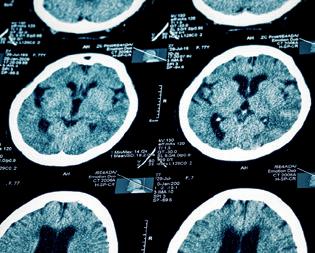
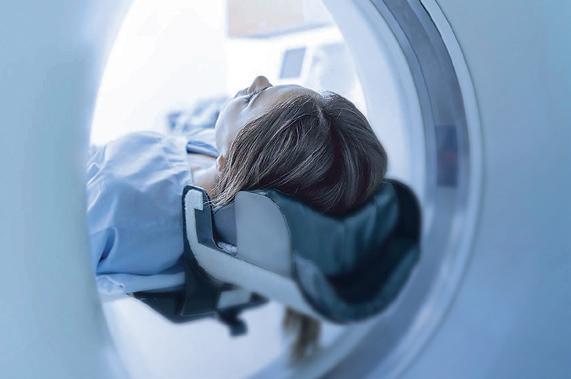
Multiple solutions to all your needs
iPNG: chillers with inverter driven screw compressors up to 1,383 kW cooling capacity. , fail-safe engineering, robust quality MTA offers air and water-cooled chillers and heat pumps in the 2-2,000 kW range with scroll-inverter, scroll, multi-scroll and screw configurations.
Close at hand since 1999, with local stock
MTA’s long-standing direct local presence, with thousands of units installed all over Australia, is the assurance of rapid regional support.
Swift product and spare parts delivery directly from our warehouse. Over 30 nominated qualified refrigeration service centers, with 24/7 response, provide excellent after-sales support nationwide

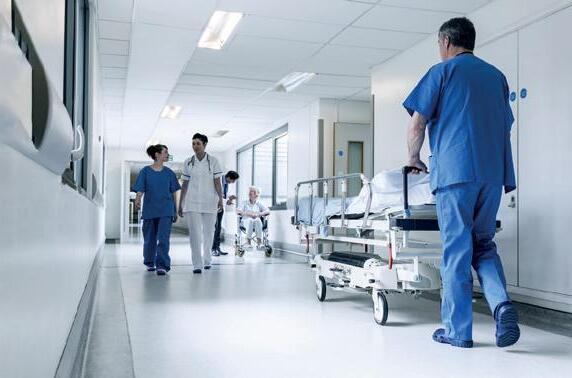

in a neonatal ward in Belfast were infected with P. aeruginosa, the source of which was determined to be taps in the neonatal ward; all three babies died. Another outbreak at the Western Health and Social Care Trust involved the infection of three infants, the source of which was also determined to be from facility taps / sinks. Two of the babies died (The Regulation and Quality Improvement Authority, 2012).
• A multi-drug resistant P. aeruginosa outbreak in a Melbourne paediatric oncology ward led to the infection of eight children. The source of the infection was attributed to a toy box containing water-retaining bath toys. This further highlights the credible risk posed by P. aeruginosa in Australian Healthcare settings (Buttery et al., 1998).
Managing OPPPs in premise plumbing systems
Effective management of pathogens in premise plumbing is generally understood to require a multibarrier approach, this intends to utilise an integrated combination of barriers that collectively reduce the risk of water system contamination and thus reduce risks to the end users (NHMRC, 2011).
Due to the inability to effectively control source water treatment once water crosses a given property boundary, it is important that efforts to manage the risks posed by OPPPs focus on practical downstream control measures. Whilst it has been demonstrated that Legionella is not the only pathogen of concern in water distribution systems, many of the methods employed to control Legionella are also effective in controlling OPPPs such as NTM and P. aeruginosa.
• Temperature control – maintenance of high temperatures in hot water systems
○ AS/NZS 3500.5 (2021) requires that that hot water is stored at a minimum temperature of 60°C.
○ This has the benefit of reducing microbial growth, provided temperatures are maintained at 60°C throughout the water distribution system. However, within buildings with sensitive populations, such as hospitals, antiscalding measures must be used. For example, thermostatic mixing values are commonly used in healthcare settings to protect the safety of end water users.
• Temperature control – thermal disinfection
○ A common strategy used to control OPPPs is the undertaking of a pasteurisation or ‘thermal shock’ of the water distribution system (or specific parts of it), which consists of increasing the water temperature above 65°C for a sustained period, followed by flushing of outlets to ensure that temperatures ≥60 ⁰C are achieved at outlets.
○ There are several factors that must be considered for this to be effective. These include:
– The removal of deadlegs, or reducing these as far as possible, to ensure that after pasteurisation has occurred, stagnant areas of the distribution system don’t simply release pathogens back into the water distribution system (Springston and Yocavitch, 2017).
– Understanding the likelihood of existing scale within the system, particularly in aged buildings. Such scale can shield bacteria from exposure to high temperatures, reducing the efficacy of the pasteurisation process. At least eight hours of pasteurisation is thought to be necessary to expose the entirety of the scale layer to temperatures above 60 ⁰C (Masters et al., 2015).
○ It has been suggested that pasteurisation should only be a short-term element of a water management approach, for example as a rapid response to systemic pathogen detections in a water distribution system (World Health Organization, 2011). This is because high temperatures can be detrimental to building infrastructure, and are unable to mitigate against recolonisation (Carlson et al., 2020; Leslie, Hinds and Hai, 2021).
– For example, one study highlighted that postpasteurisation, Legionella pneumophila quickly spread throughout the water distribution system; it was hypothesised that this could have been the result of a nutrient-release into the water distribution system from detached biofilm (Temmerman et al., 2006)
• Chemical disinfection
○ Secondary disinfection, the purpose of which is to maintain disinfection residuals at levels which reduce regrowth of microorganisms in a water distribution system, can contribute to effective control of OPPPs. Particularly on cold water systems in warm climates such as Australia, where water cold water temperatures are typically at suitable temperatures to favour pathogenic growth within the water distribution system.
○ Although primary disinfection residuals from the water treatment plant can be effective in controlling OPPPs when levels are high enough, the low levels of disinfection residual often present at locations distal from the treatment plant may be insufficient for bacterial removal. Particularly in healthcare settings where there are at-risk individuals, this can stimulate the need for the installation of on-site secondary chemical disinfection (Leslie, Hinds and Hai, 2021). While this need is often identified, the cost implications of such secondary disinfection can be prohibitive for many sites.
• The challenges posed by ‘green energy’ initiatives
○ In the move towards sustainable development, numerous ‘green’ initiatives have failed to take into account the ways in which altered building designs may negatively impact water quality (Leslie, Hinds and Hai, 2021).
○ Hands free metered tap designs have been demonstrated to increase the potential for growth of OPPPs such as P. aeruginosa (Merrer et al., 2005; Yapicioglu et al., 2012).
○ The practice of reducing hot water system temperatures in an effort to reduce energy consumption can severely impact the control of OPPPs, providing favourable growth conditions for pathogenic bacteria (Rhoads, Pruden and Edwards, 2016)

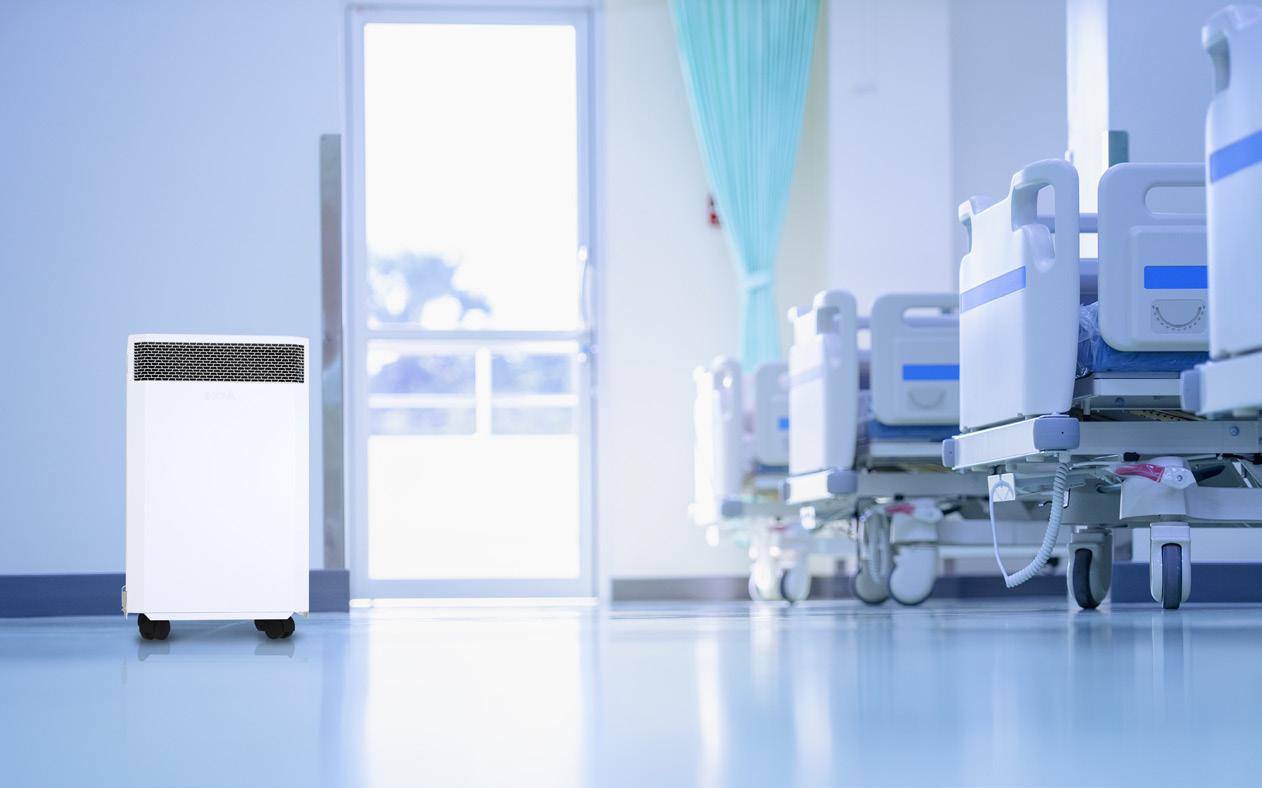

The risk of chemical contamination of water systems
Whilst microbiological contamination poses the greatest risk to the safety of water consumers, chemical contamination also has the potential to causes disease (Villanueva et al., 2014). It is particularly challenging to determine the exposure and human health impacts of chemicals in drinking water, but improving our understanding in this area will be important to improving overall water safety within facilities.
• Lead, at levels higher than the Australian Drinking Water Guidelines (NHMRC, 2011) was detected from the Perth Children’s Hospital drinking water system prior to the facility opening. The source was identified to be brass fittings within the water distribution system, with a process of dezincification resulting in lead leaching into water. With the primary patient cohort to be children, the elevated lead levels were a serious cause for concern given the negative impact lead can have on cognitive development (Bellinger, 2008). The elevated lead levels resulted in an extremely costly infrastructure replacement program, and further expensive delay to the hospital’s opening (Weeramanthri et al., 2017).
○ As a result of concerns regarding the leaching of lead into water systems, the Australian Building Codes Board (ABCB) have mandated the reduction of lead in brass plumbing products to 0.25%, down from 4-6%, for all new installations from May 2026 (ABCB, 2023). Whilst these actions help to address community concerns regarding the danger of lead in water systems, it has raised criticism that, considering the antimicrobial properties of lead demonstrated in numerous studies, this may have a resultant negative effect on the control of OPPPs in water systems (Bezanson et al., 1992; Michels, Moran and Michel, 2008; Molino et al., 2019). This further highlights the interconnected nature of water distribution system risks, further advocating the need for an allencompassing water risk management strategy, which needs to consider all risks together, rather than isolated hazards and risks.
In summary, there are numerous risks that need to be considered within facility water distribution systems, beyond Legionella. While many of the control strategies used to control Legionella may be effective against other OPPPs, these other OPPPs may also thrive in slightly different niches that require an additional understanding to effectively manage all associated risks. Although the research indicates that pathogens pose the primary risk to human health from water distribution systems, there are chemical risks that stakeholders involved in managing water distribution system risks should also be aware of. In particular, surveillance for chemicals such as heavy metals should be considered during precommissioning tests or tests undertaken on very aged infrastructure. With the implementation of holistic facility water quality management, a risk-based and proactive approach to water quality management should be applied to improve operational resilience and improve public health outcomes.
References
Arat, S., Bullerjahn, G.S. and Laubenbacher, R., 2015. A network biology approach to denitrification in Pseudomonas aeruginosa. PloS One, 10(2), p.e0118235.
Australian Building Codes Board, 2023. Update: Advice on the new lead requirements. Available at: <https://www.abcb.gov.au/news/2023/ update-advice-new-lead-requirements#:~:text=Plumbing%20 products%20with%20a%20reduced%20level%20of%20lead%20 are%20coming&text=From%201%20May%202026%2C%20 copper,used%20to%20convey%20drinking%20water.> [Accessed 18 May 2023].
Bédard, E., Prévost, M. and Déziel, E., 2016. Pseudomonas aeruginosa in premise plumbing of large buildings. MicrobiologyOpen, 5(6), pp.937–956.
Bellinger, D.C., 2008. Neurological and Behavioral Consequences of Childhood Lead Exposure. PLoS Medicine, 5(5), p.e115.
Berjeaud, J.-M., Chevalier, S., Schlusselhuber, M., Portier, E., Loiseau, C., Aucher, W., Lesouhaitier, O. and Verdon, J., 2016. Legionella pneumophila: The Paradox of a Highly Sensitive Opportunistic Waterborne Pathogen Able to Persist in the Environment. Frontiers in Microbiology, [Online] 7.
Bezanson, G., Burbridge, S., Haldane, D. and Marrie, T., 1992. In situ colonization of polyvinyl chloride, brass, and copper by Legionella pneumophila Canadian Journal of Microbiology, 38(4), pp.328–330.
Brode, S.K., Daley, C.L. and Marras, T.K., 2014. The epidemiologic relationship between tuberculosis and non-tuberculous mycobacterial disease: a systematic review. The International Journal of Tuberculosis and Lung Disease, 18(11), pp.1370–1377.
Buttery, J.P., Alabaster, S.J., Heine, R.G., Scott, S.M., Crutchfield, R.A. and Garland, S.M., 1998. Multiresistant Pseudomonas aeruginosa outbreak in a pediatric oncology ward related to bath toys: The Pediatric Infectious Disease Journal, 17(6), pp.509–513.
Carlson, K.M., Boczek, L.A., Chae, S. and Ryu, H., 2020. Legionellosis and Recent Advances in Technologies for Legionella Control in Premise Plumbing Systems: A Review. Water, 12(3), p.676.
Collier, S.A., Deng, L., Adam, E.A., Benedict, K.M., Beshearse, E.M., Blackstock, A.J., Bruce, B.B., Derado, G., Edens, C., Fullerton, K.E., Gargano, J.W., Geissler, A.L., Hall, A.J., Havelaar, A.H., Hill, V.R., Hoekstra, R.M., Reddy, S.C., Scallan, E., Stokes, E.K., Yoder, J.S. and Beach, M.J., 2021. Estimate of Burden and Direct Healthcare Cost of Infectious Waterborne Disease in the United States. Emerging Infectious Diseases, 27(1), pp.140–149.
Crist, M.B. and Perz, J.F., 2017. Modern Healthcare Versus Nontuberculous Mycobacteria: Who Will Have the Upper Hand? Clinical Infectious Diseases: An Official Publication of the Infectious Diseases Society of America, 64(7), pp.912–913.
Dowdell, K., Haig, S.-J., Caverly, L.J., Shen, Y., LiPuma, J.J. and Raskin, L., 2019. Nontuberculous mycobacteria in drinking water systems – the challenges of characterization and risk mitigation. Current Opinion in Biotechnology, 57, pp.127–136.
Falkinham, J., 2015. Common Features of Opportunistic Premise Plumbing Pathogens. International Journal of Environmental Research and Public Health, 12(5), pp.4533–4545.
Feazel, L.M., Baumgartner, L.K., Peterson, K.L., Frank, D.N., Harris, J.K. and Pace, N.R., 2009. Opportunistic pathogens enriched in showerhead biofilms. Proceedings of the National Academy of Sciences, 106(38), pp.16393–16399.
Forbes, B.A., 2017. Mycobacterial Taxonomy. Journal of Clinical Microbiology, 55(2), pp.380–383.
Fujii, A., Seki, M., Higashiguchi, M., Tachibana, I., Kumanogoh, A. and Tomono, K., 2014. Community-acquired, hospital-acquired, and healthcare-associated pneumonia caused by Pseudomonas aeruginosa. Respiratory Medicine Case Reports, 12, pp.30–33.
Greub, G. and Raoult, D., 2004. Microorganisms Resistant to Free-Living Amoebae. Clinical Microbiology Reviews, 17(2), pp.413–433.
Hatzenbuehler, L.A., Tobin-D’Angelo, M., Drenzek, C., Peralta, G., Cranmer, L.C., Anderson, E.J., Milla, S.S., Abramowicz, S., Yi, J., Hilinski, J., Rajan, R., Whitley, M.K., Gower, V., Berkowitz, F., Shapiro, C.A., Williams, J.K., Harmon, P. and Shane, A.L., 2017.
Pediatric Dental Clinic-Associated Outbreak of Mycobacterium abscessus Infection. Journal of the Pediatric Infectious Diseases Society, 6(3), pp.e116–e122.
LaBauve, A.E. and Wargo, M.J., 2012. Growth and Laboratory Maintenance of Pseudomonas aeruginosa Current Protocols in Microbiology, [Online] 25(1).
Leong, W., Poh, W.H., Williams, J., Lutz, C., Hoque, M.M., Poh, Y.H., Yee, B.Y.K., Chua, C., Givskov, M., Sanderson-Smith, M., Rice, S.A. and McDougald, D., 2022. Adaptation to an Amoeba Host Leads to Pseudomonas aeruginosa Isolates with Attenuated Virulence. Applied and Environmental Microbiology, 88(5), pp.e02322-21.
Leslie, E., Hinds, J. and Hai, F.I., 2021. Causes, Factors, and Control Measures of Opportunistic Premise Plumbing Pathogens—A Critical Review. Applied Sciences, 11(10).
Lyman, M.M., Grigg, C., Kinsey, C.B., Keckler, M.S., Moulton-Meissner, H., Cooper, E., Soe, M.M., Noble-Wang, J., Longenberger, A., Walker, S.R., Miller, J.R., Perz, J.F. and Perkins, K.M., 2017. Invasive Nontuberculous Mycobacterial Infections among Cardiothoracic Surgical Patients Exposed to Heater-Cooler Devices1. Emerging Infectious Diseases, 23(5), pp.796–805.
Masters, S., Parks, J., Atassi, A. and Edwards, M.A., 2015. Distribution system water age can create premise plumbing corrosion hotspots. Environmental Monitoring and Assessment, 187(9), p.559.
Merrer, J., Girou, E., Ducellier, D., Clavreul, N., Cizeau, F., Legrand, P. and Leneveu, M., 2005. Should electronic faucets be used in intensive care and hematology units? Intensive Care Medicine, 31(12), pp.1715–1718.
Michels, H., Moran, W. and Michel, J., 2008. Antimicrobial Properties of Copper Alloy Surfaces, With a Focus on Hospital-Acquired Infections. International Journal of Metalcasting, 2(3), pp.47–56.
Mirsaeidi, M., Farshidpour, M., Ebrahimi, G., Aliberti, S. and Falkinham, J.O., 2014. Management of nontuberculous mycobacterial infection in the elderly. European Journal of Internal Medicine, 25(4), pp.356–363.
Molino, P.J., Bentham, R., Higgins, M.J., Hinds, J. and Whiley, H., 2019. Public Health Risks Associated with Heavy Metal and Microbial Contamination of Drinking Water in Australia. International Journal of Environmental Research and Public Health, 16(20), p.3982.
Mondino, S., Schmidt, S., Rolando, M., Escoll, P., Gomez-Valero, L. and Buchrieser, C., 2020. Legionnaires’ Disease: State of the Art Knowledge of Pathogenesis Mechanisms of Legionella Annual Review of Pathology: Mechanisms of Disease, 15(1), pp.439–466.
National Health and Medical Research Council and National Resource Management Ministerial Council, 2011. Australian Drinking Water Guidelines Paper 6 National Water Quality Management Strategy Canberra, Australia: Commonwealth of Australia.
O. Falkinham, J., 2018. Mycobacterium avium complex: Adherence as a way of life. AIMS Microbiology, 4(3), pp.428–438.
Ratnatunga, C.N., Lutzky, V.P., Kupz, A., Doolan, D.L., Reid, D.W., Field, M., Bell, S.C., Thomson, R.M. and Miles, J.J., 2020. The Rise of Non-Tuberculosis Mycobacterial Lung Disease. Frontiers in Immunology, 11, p.303.
Rhoads, W.J., Pruden, A. and Edwards, M.A., 2016. Survey of green building water systems reveals elevated water age and water quality concerns. Environmental Science: Water Research & Technology, 2(1), pp.164–173.
Saeed, D.K., Shakoor, S., Irfan, S. and Hasan, R., 2016. Mycobacterial contamination of bronchoscopes: Challenges and possible solutions in low resource settings. International Journal of Mycobacteriology, 5(4), pp.408–411.

Specialists in AS 3003 2018, Body and Cardiac
Protect. Designing, installing, commissioning and reporting to the standard.

Call Cameron direct on 0416176166
cameron@aciaelectrical.com.au
Installing electrical services up to 2000 Amps; from design concepts to the commissioning of switchboards, generators and transfer switches.
Installation of power/lighting and communications for all parts of hospitals, with detailed reference to AS 3000 and AS 3003.
ACIA Electrical Services can provide energy monitoring and engineering reports to determine conditions of the electrical system. We use the FLUKE 434 Series 11 monitor to capture the information.
Specialising in medical theatres and imaging departments, including the supply of X-ray warning signs.
ACIA Electrical Services provides UPS’s, voltage stabilizers, power factor correction units and power filters, to any installation which requires protection.



Over 20 years working in the medical industry
Sax, H., Bloemberg, G., Hasse, B., Sommerstein, R., Kohler, P., Achermann, Y., Rössle, M., Falk, V., Kuster, S.P., Böttger, E.C. and Weber, R., 2015. Prolonged Outbreak of Mycobacterium chimaera Infection After Open-Chest Heart Surgery. Clinical Infectious Diseases: An Official Publication of the Infectious Diseases Society of America, 61(1), pp.67–75.
Singh, J., O’Donnell, K., Nieves, D.J., Adler-Shohet, F.C., Arrieta, A.C., Ashouri, N., Ahuja, G., Cheung, M., Holmes, W.N., Huoh, K., Tran, L., Tran, M.T., Pham, N. and Zahn, M., 2021. Invasive Mycobacterium abscessus Outbreak at a Pediatric Dental Clinic. Open Forum Infectious Diseases, 8(6), p.ofab165.
Springston, J.P. and Yocavitch, L., 2017. Existence and control of Legionella bacteria in building water systems: A review. Journal of Occupational and Environmental Hygiene, 14(2), pp.124–134.
Standards Australia, 2021. AS/NZS 3500.4:2021
Tan, Y., Su, B., Shu, W., Cai, X., Kuang, S., Kuang, H., Liu, J. and Pang, Y., 2018. Epidemiology of pulmonary disease due to nontuberculous mycobacteria in Southern China, 2013–2016. BMC Pulmonary Medicine, 18(1), p.168.
Taylor, R.H., Falkinham, J.O., Norton, C.D. and LeChevallier, M.W., 2000. Chlorine, chloramine, chlorine dioxide, and ozone susceptibility of Mycobacterium avium. Applied and Environmental Microbiology, 66(4), pp.1702–1705.
Temmerman, R., Vervaeren, H., Noseda, B., Boon, N. and Verstraete, W., 2006. Necrotrophic Growth of Legionella pneumophila Applied and Environmental Microbiology, 72(6), pp.4323–4328.
The Regulation and Quality Improvement Authority, 2012. Independent Review of Incidents of Pseudomonas aeruginosa Infection in Neonatal Units in Northern Ireland

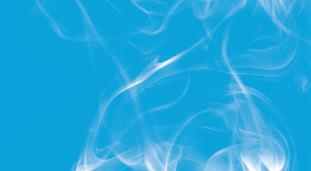

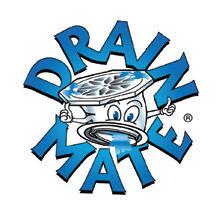
Theodore K Marras, Pamela Chedore, Alicia M Ying, and Frances Jamieson, 2007. Isolation prevalence of pulmonary nontuberculous mycobacteria in Ontario, 1997–2003. Thorax, 62(8), p.661.
Tuon, F.F., Dantas, L.R., Suss, P.H. and Tasca Ribeiro, V.S., 2022. Pathogenesis of the Pseudomonas aeruginosa Biofilm: A Review. Pathogens, 11(3), p.300.
Van Der Werf, M.J., Ködmön, C., Katalinić-Janković, V., Kummik, T., Soini, H., Richter, E., Papaventsis, D., Tortoli, E., Perrin, M., Van Soolingen, D., Žolnir-Dovč, M. and Østergaard Thomsen, V., 2014. Inventory study of non-tuberculous mycobacteria in the European Union. BMC Infectious Diseases, 14(1), p.62.
Villanueva, C.M., Kogevinas, M., Cordier, S., Templeton, M.R., Vermeulen, R., Nuckols, J.R., Nieuwenhuijsen, M.J. and Levallois, P., 2014. Assessing Exposure and Health Consequences of Chemicals in Drinking Water: Current State of Knowledge and Research Needs. Environmental Health Perspectives, 122(3), pp.213–221.
Weeramanthri, T., Walker, C., Davies, A., Tan, H., Theobald, R. and Dodds, J., 2017. Report on Perth Children’s Hospital Potable Water: Chief Health Officer Review
World Health Organization, 2011. Water safety in buildings. [Online] Geneva: World Health Organization. Available at: <https://apps.who. int/iris/handle/10665/76145> [Accessed 17 May 2023].
Yapicioglu, H., Gokmen, T.G., Yildizdas, D., Koksal, F., Ozlu, F., KaleCekinmez, E., Mert, K., Mutlu, B., Satar, M., Narli, N. and Candevir, A., 2012. Pseudomonas aeruginosa infections due to electronic faucets in a neonatal intensive care unit: Infections due to electronic faucets. Journal of Paediatrics and Child Health, 48(5), pp.430–434.








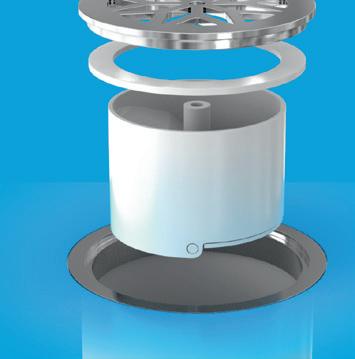


SPEEDY RECOVERY
HEPA filtration in Recovery Wards Without Upsizing Fans or Ductwork
The History
Since the days of Louis Pasteur and nineteenth century France, the global scientific community have known that bacteria and disease are linked.
Jump forward a century and in 1962 Riley, Mills et al1 succeeded in demonstrating airborne transmission of tuberculosis (TB), the first important disease to be scientifically accepted as airborne.
In modern times, the scientific and medical community recognise the importance of using decontaminated air in high-risk environments. Simply put, it is why state-based engineering guidelines mandate the use of HEPA standard filtration in operating theatres.
Moderate Risk Areas
Yet despite modern hospitals consistently dealing with low immunity patients in oncology wards, neo natal areas and recovery rooms, HEPA standard filtration is rarely installed in these moderate risk areas.
As every experienced hospital engineer knows, conventional HEPA filters are extremely dense, with tiny holes for air to pass through.
This reduces air flow substantially and drives up fan energy. Install enough HEPA filters and the fans quite literally can’t push enough air through the zone and compliance falls away.
The Dilemma
So for many years Hospital Engineers have been left with a dilemma: they know that airborne infection risks are real –they know that many patients in moderate risk areas will suffer if infected – yet they haven’t been able to expand HEPA filtration without crippling the HVAC system, or conducting a major upgrade of the air distribution system.
So instead, engineers resort to extreme amounts of outdoor air to try and dilute as many contaminants as possible, without really knowing how effective it is and paying an enormous energy and emissions penalty.
The Choice
That was the situation faced by every modern hospital until recently. Thankfully, the Adelaide Women’s and Children’s Hospital have proven that hospitals now have the choice to achieve HEPA standard filtration without upsizing their fans or ductwork.
Real World Implementation
The Adelaide Women’s and Children’s Hospital implemented Plasma Shield into their recovery suite and importantly the results
were recorded and assessed by researchers from the University of Adelaide. Their independent report confirmed that;
• Measurements after the Plasma Shield confirmed the achievement of the HEPA standard filtration efficiency of 99.97% for particles of 0.3 microns; and
• This implementation was achieved without upsizing the fan and ductwork system, due to the lower pressure drop of the Plasma Shield system.
Independent analysis showed that notwithstanding the potential of close-range contact, the infection risk mitigation of this air treatment was equivalent to all staff wearing masks for their entire shift.
The Scientific Evidence
In the charts below, you can see the data that underpinned the results. For virus like particles:
• Before the Plasma Shield was operating, a MERV 13 filter was in place and the average virus like particle count was 773,145 per cubic metre of air and the maximum count was above 2.3 million.
• After the Plasma Shield was operating the average virus like particle count was 43,816 per cubic metre of air and the maximum count was below 136,000.

For bacteria like particles:
• Before the Plasma Shield was operating, a MERV 13 filter was in place and the average bacteria like particle count was 279,859 per cubic metre of air and the maximum count was above 622,000.
• After the Plasma Shield was operating the average bacteria like particle count was 37,456 per cubic metre of air and the maximum count was below 172,000.
Further capabilities
To further test the capabilities of the Plasma Shield solution, independent testing has also been completed in a clean room setting.

1. ASHRAE, the US based, world leading authority on HVAC have now published the work of Dr Timothy Lau and Dr Martin Belusko2, confirming that in a clean room setting:
2. The Plasma Shield system demonstrated a single pass particle removal efficiency of 99.97% for ambient air particles of 0.3 microns, similar to conventional HEPA filters;
3. When operating as a clean room filter, the Plasma Shield system was able to achieve a recovery time of 19 minutes when tested to ISO 14644.1 and ISO 14644.3 respectively, consistent with what HEPA would achieve; and That the Plasma Shield was able to achieve a zero count of Colony Forming Units (CFU) per cubic metre of air for a range of bacteria and fungi, indicating effective microbial removal. Importantly, HEPA filters work by proxy, they stop unwanted contaminants based on particle size. Plasma Shield instead
directly destroys harmful contaminants, furthering its applicability for settings such as recovery suites and oncology wards.
Options for Hospital Engineers
With this proven technical advance Hospital Engineers now have a series of options to improve the health of the air in their moderate risk areas;
A. Upsize the air handling units and duct work at great cost, inconvenience and delay, then expand conventional HEPA filtration; or
B. Continue to use copious amounts of outdoor air to dilute contaminants, burning enormous energy, emissions and costs; or
C. Use Plasma Shield Bio-HEPA filtration and achieve equal or above the filtration efficiency of 99.97%, achieve microbial destruction (zero CFU), with very little changes to plant, equipment and energy use.
The authors respectfully note that the only option that is no longer available, is to knowingly expose our patients to harmful airborne contaminants…
1 National Library of Medicine, https://www.ncbi.nlm.nih.gov/pmc/ articles/PMC9538841/
2 ASHRAE Journal, https://www.nxtbook.com/nxtbooks/ashrae/ ashraejournal_XDEFVG/index.php?startid=2#/p/38, December 2023, Timothy Lau, PHD, is lecturer in Sustainable Energy Engineering at the University of South Australia, Martin Belusko, PHD, is an executive consultant at Mondial Advisory, Parkside, South Australia.



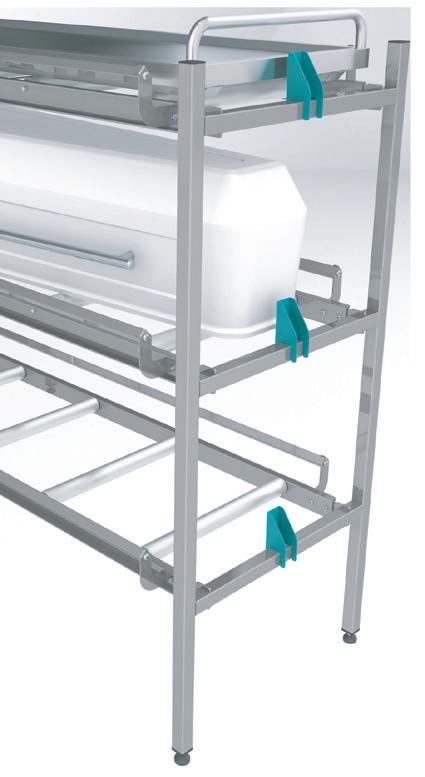


POST-EARTHQUAKE FUNCTION OF MEDICAL FACILITIES
Jordan Bartlett Facility & Seismic Resilience ConsultantEarthquakes are natural hazards that are defined as a ‘Disaster’ when the built environment fails. The Australian and New Zealand building codes have resilience measures (standards) for these events, although they are often misunderstood, overlooked or discounted through inaction or avoidance. In new construction & upgrade of facilities, there is strong reliance upon the construction industry to make resilience decisions without critical review by resilience specialists or specific direction from facility owners, operators or the end client.
The National Construction Code of Australia requires ‘holistic design’ to meet its many parts, but what happens when constant change results in vulnerabilities in our systems, and worse: Are the perceived ‘minimum standards’ adequate or holistically met? Is there capacity for post-disaster function built into our medical facilities? Who’s measuring/testing these resilience measures? Where does business continuity influence facility design?
This paper is generally focused on the Australian experience, although the New Zealand experience for earthquake resilience is still in need of significant advancement. This paper attempts to address these shortfalls and hopefully disrupt the comfort of facility stakeholders (Yes, you, the reader) before medical facilities are shaken & stirred.
Medical Facilities
Of the many lifelines of any society, medical facilities are critical infrastructure maintaining business-as-usual (BAU) and occasionally post-disaster functions. During BAU, these facilities provide daily, life-sustaining, critical services to the most vulnerable in our community and emergency/accident support when needed. Notably, it’s post-disaster that medical facilities become even more critical during the Response phase with life-saving services, and essential to Recovery with the re-establishment of life-sustaining services and repairing the injured.
Markedly, we’ve spent (and continue to spend) a pretty coin on them through a great deal of work: they had better be ‘up-to-code’ and resilient. A large team of professionals designed these facilities in accordance with the Australian Health Facility Guidelines and the relevant building code as they understood them. The structural engineers designed the structure for the specific earthquake design event, but are we sure the essential architectural and building service elements
had adequate treatment to remain serviceable? Can it operate as an ‘island’? And for how long?
Business Continuity Planning
Across the corporate and government world, we embed Business Continuity into our processes, IT, equipment purchasing, consumables, supplier selection, and the training of people. A significant part of BC planning for medical facilities is a resilient facility and work environment, i.e., remaining fit for purpose, especially when complex services require specialised equipment. Operational shortfalls may see an organisation require an improved facility and build a new, upgrade an existing, or acquire an existing facility:
For your consideration: Does your organisation or trusted client provide their business continuity needs as part of the property search or design and construction brief?
These are complex ‘fit-for-purpose’, expensive buildings with specialised systems: is relocating post-disaster an easy option or even possible? Also, Earthquakes can affect a vast area. Resilience to stay in place is highly desirable. Still, earthquake is hardly ever considered in the Business Continuity plan, let alone the required system resilience delivered well in the built environment.
The Resilience Challenge
We have a disconnected system of practice:
1. Business continuity plans (BCP) of medical practices without earthquake (EQ) considerations.
2. Medical facilities designed for business-as-usual operation without BCP considerations;
3. Expert consultants delivering perceived minimum requirements of the relevant building codes (generally without systems resilience to EQ).
This results in an active medical facility that is vulnerable to EQ and incapable of providing essential services during the Response or Recovery stages of a disaster.
Introducing AS1170.4 & the IL4 Special Study
Earthquake actions in Australia (AS1170.4:2007) were incorrectly considered only a structural engineer’s obligation. Section 8: Parts and Components constitute 75-85% of a medical facility build cost: these are the architectural and building services (including machinery/equipment and attachments to the facility). Commonly referred to as Seismic Design of NonStructural Elements (NSE), it is still unknown in some construction circles even today, even though it has been mandated in full by the National Construction Code (NCC) since 2010.
All structures are assigned an Importance level based on the NCC, and the structural engineer utilises AS1170.4 to design the structure accordingly. The structural performance for forces and displacement are then designed and accommodated by the architectural and building services. It’s a risk-based process considering life safety systems, explosive energies, moving elements, etc. It’s worth noting that Importance Level 4 (IL4) facilities are generally with a post-disaster function or a hazardous facility.

the facility post-disaster, capacity to run offline, systems for assisted operation (i.e. septic suction truck access), overflow areas for increased operational capacity, etc.
3. Ensure designers of architecture and systems make clear the Special Study requirements are enshrined in buildable systems, with seismic design considerations incorporated.
In Section 2.2, a paragraph and a table introduce the requirement for an IL4 facility to have a Special Study to ensure it ‘remains serviceable for immediate use’ following an Importance Level 2 design event (1 in a 500-year earthquake). This minor sentence does not appear with a definition, although it has its origins in international standards, guides and similar literature.
For a detailed explanation of AS1170.4 and Special Study requirements, the Australian Earthquake Engineering Society has published the ‘AS1170.4-2007 Commentary: 2nd Edition’ for free download here: https://aees.org.au/as-1170-4/
Earthquake Resilience Solutions
How do you deliver a seismic-compliant facility?:
1. Your organisation or client updates their BCP to consider how they wish their facility to perform post-earthquake, which may focus upon the essential services only, operating times with lifeline network loss (such as power, water, sewer, internet), limited supply chains and staffing.
2. Prepare a Special Study considering the many systems within the building, their importance to the operation of
4. Actions, not words: if someone is checking it, then it’s more likely to be done. If that checking is early and often, there’s no avoiding it.
5. Test the systems and compare the delivered elements to the BCP, the Special Study, the design documentation and the as-built drawings. Identify the gaps, correct anything that needs attention, and then update the BCP companywide to ensure the learnings are repeated for future upgrades or new facilities.
Note: Help is available with these many processes from a Seismic consultant… it’s what we do.
In conclusion
Healthcare supports some of society’s most vulnerable people, and during natural hazard events, they represent the most significant loss of lives. The performance of nonstructural elements in healthcare facilities requires greater attention to avoid these shortfalls. Business continuity planning should guide the design to the commissioning process of new and upgraded facilities in alignment with AS1170.4 and the Special Study for post-disaster facilities.

Mitigate risk and ensure compliance in your healthcare facility.

Ensure power supply reliability
Protect people, patients and property

Be ready in case of an emergency
Mitigate risk and downtime for your healthcare facility through proactive maintenance of HVAC, Fire and Electrical systems. Regular servicing will help to eliminate and spot any potential problems before breakdowns.
At Grosvenor Engineering Group (GEG), we understand that the comfort of patients and doctors is paramount in hospitals and clinics. The reliable operation of cooling equipment supporting critical MRI and other medical equipment cannot be compromised.
At GEG, we have over 25 years’ experience providing end-to-end solutions to many healthcare facilities. Our technicians proactively maintain operational technical assets, ensuring your patient-care continues as usual.
www.gegroup.com.au
ALICE SPRINGS HOSPITAL –RESILIENCE THROUGH DESIGN AND DEVELOPMENT
Dario SalvatoreI first visited Alice Springs and Central Australia in the early 1990s, as part of a Design Studio field trip, part of my Architecture Course. I enjoyed a week of walking the Alice Springs township, identifying my design site and visiting the natural and unique surrounds of the region.
Without doubt, it is a uniquely beautiful part of the world. I completed my design project, presented it to my supervisor, received the mandatory critique, and moved on. I was unaware of the relationship I would develop with Central Australia and Alice Springs Hospital.
In 2005, an opportunity presented to be involved in building compliance and upgrade work, addressing all of the outbuildings on the site. I spent weeks with the primary engineering consultant integrating design, engineering and compliance solutions on all of the outbuildings. The focus was on fire and life safety, however compliance necessarily required the Building Code of Australia to be addressed in order to achieve an optimum solution. The team worked through reports and documentation, which were completed as a set of documents addressing building conditions and detailing design and engineering solutions.
A few years passed and I was then invited to work on the fire and life safety upgrade of the Paediatrics Ward, located within the Hospital Main Ward Block. It demonstrated the complexity of the project and how unique solutions were required. Unique in the sense that we were working with a large isolated health facility located in Central Australia, serving an immense geographical area. And the hospital needed to remain operational and safe. Local builders and trades were committed to quality and keen to work with consultants to achieve quality and compliant building asset outcomes.
This rectification and upgrade work continued under the leadership of the Northern Territory Government. Works took place throughout the Main Ward Block and required sensitive treatment and consideration of structure, fire and smoke compartmentation, building engineering services and basic infection management measures. Space and clearances were typically limited and required careful coordination of architecture and building engineering services to achieve the required upgrade and compliance.
It became evident a significant amount of complex and intrusive rectification work was required within this building, a building which is heavily used and is relied upon by clinicians, staff, patients and visitors alike. The building and
its occupants needed to possess resilience from its existing condition, during the rectification construction phase, and in its completed form. Thirteen works packages, staged over a three year period needed to be carefully defined, scoped, managed, de-risked, designed, documented, constructed and delivered back to the building’s occupants. Multiple executive, project and stakeholder meetings were regularly held over the full course of the project, requiring commitment and resilience of the team as a whole and of each individual.
A significant portion of the rectification works comprised building engineering services, structural engineering and fire compartmentation, all requiring detailed and careful coordination and meeting the hospital’s fire strategy. An engineered alternative solution – performance solution – was adopted for the rectification works, extending the design and engineering team to create bespoke design solutions to meet the intent of the fire strategy. Design and engineering would play their part in lifting the building’s resilience and sustaining it for generations to follow. Early and enabling infrastructure works facilitated the development of the building works.
Alternative construction zones, routes and pathways were designed to create access to each construction area, providing full separation from patient and clinical spaces. Infection management remained paramount, whilst patient centricity and patient experience was not compromised. Any alternatives were seen as an opportunity to improve spatial efficacy, safety and experience. This all supported the procurement process and delivery of each zone and works package, and equally reduced the impact on the building and its infrastructure. The local Alice Springs community was fully engaged and was a key stakeholder in the design and development process. Being a richly diverse community, input was relevant and provided different thinking, further enriching the co-design process.
Let’s talk a little about the Central Australia community. I found it to be a true melting pot of cultures and ideas, anchored by First Nations peoples and communities. With a significant representation of First Nations people and non English speaking tourists, Alice Springs Hospital served a community and peoples many of whom were non English speaking or English not being their primary language. This meant that stakeholder groups and liaison representatives required strong and clear communication, with sensitive interpretation of language and intent. Whilst the core of our work was focused infrastructure, elements did interface with all stakeholders. Simple elements such as wayfinding or emergency egress need to consider strong pictorial cues and not rely solely on text. Common with any project, communication remained critical to the ongoing delivery and success of the project.
The local construction industry, supported by externally sourced expert trade contractors, worked tirelessly and consistently to construct and deliver the works packages. They were well aware that the full team needed to work to a best practice model, meeting the compliance requirements at all stages of the project for every element. This required absolute focus and resilience of the team to maintain programme, quality and cost efficacy. The local team, hospital, stakeholders and community remained committed to this cause.
At its peak, our architectural team travelled on a fortnightly basis to support our local architectural team throughout all project phases. This supported the local team’s delivery and quality whilst maintaining deliverable commitments, all required on an ongoing basis. As the project progressed, the local team developed its skills and remained essentially autonomous in completing the project. The external team members oversaw and validated what had been completed locally. This approach brought real benefits to local industry and equipped industry for the next tranche of works and retaining the benefits of local expertise and involvement.
Out of the box innovative thinking from the project team identified an exceptional opportunity to create a contemporary and better located Intensive Care Unit, located in closer proximity to the then newly constructed Emergency Department, with better access to the Operating and Day Procedures Suite. This in turn created the Decant Ward, which
would be used as each Hospital Ward was developed. The identified wing permitted the Decant Ward to be modified to suit the Ward it would be temporarily accommodating. This Decant Ward would then provide surplus patient accommodation for future use, seen as a benefit and opportunity for the sustainability and effective future operation of the hospital.
As each Ward was rectified, adjacent building engineering services, corridor or common spaces were concurrently rectified, thereby reducing the burden of rectification works required in general and common areas. Staging of building structure and building services was managed on an ongoing basis, carrying out isolation, rectification and recommissioning, whilst maintaining fully operational building services in existing clinical spaces. This required regular coordination and review of existing and new services against the efficacy of existing building infrastructure.
Common areas typically linked fire and smoke separated areas and were key to maintaining the compartmentation required across the hospital. The architectural team worked closely with the building services engineering team to address the architectural and building works impact of associated works, with each discipline informing the other on how to effectively and efficiently resolve rectification details. Equally, decommissioning of public lift lobby spaces to carry out works required temporary access plans to maintain required hospital flows. Architectural input and design required innovative thinking, constantly evolving details to support and facilitate services and structural rectification works.
Design always influences the form of the building asset and how effective it supports the function of the spaces and facilities created. A health care building is no different, and requires effective planning, engineering services, infrastructure, structure and compliance to confidently support the critical functions a hospital carries out.
Considering its remote location within Central Australia, it is even more critical that Alice Springs Hospital has the level of compliance and resilience to support the critical function this facility offers the community it serves. With twenty years of rectification and compliance works successfully carried out at the Alice Springs Hospital, this building asset and the team within have certainly demonstrated the resilience required to sustain such a critical community facility.
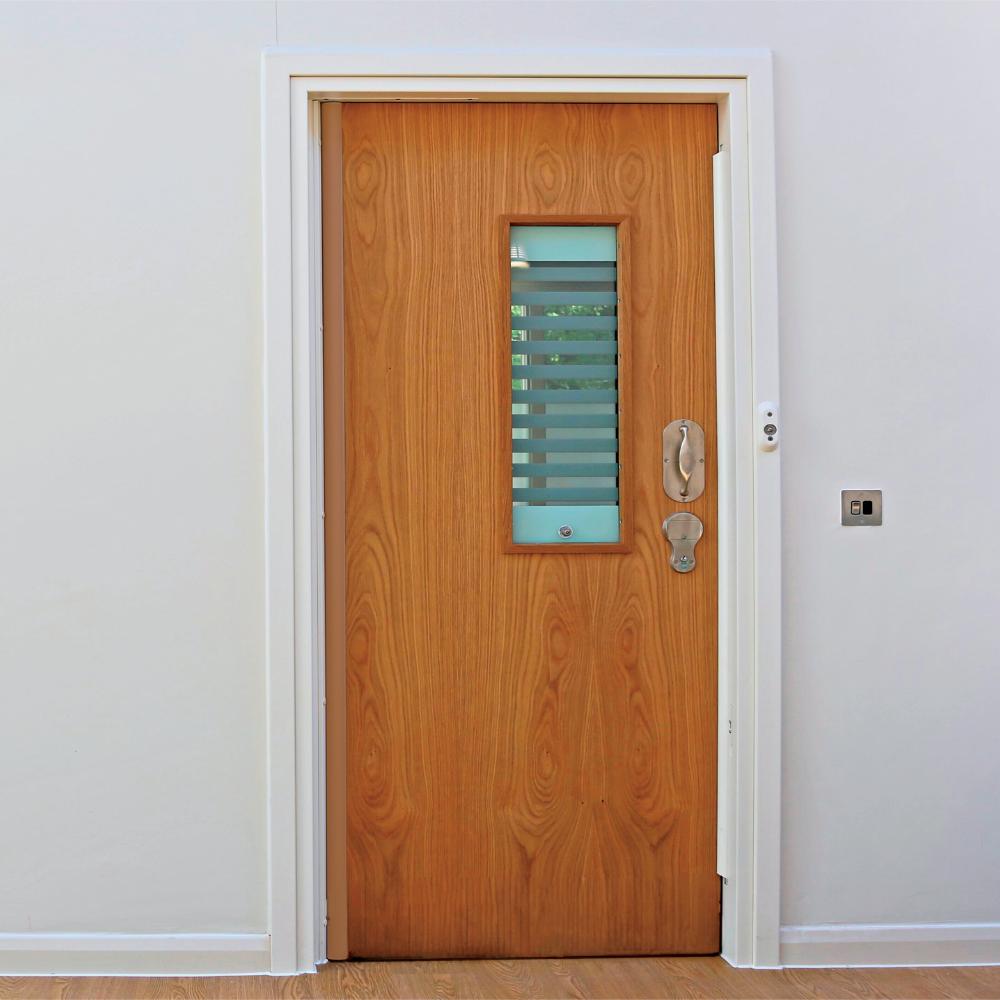

REDUCING RISK INNOVATING FOR SAFETY

Hipac is an industry leader in creating safer mental health environments. Combining a comprehensive range of anti-ligature and anti-barricade solutions with technical expertise, we collaborate with industry professionals to enhance and create spaces that minimise risk and aid recovery in challenging environments.
Visit us to learn more:
1800 75 93 93
info@hipac.com.au
www.hipac.com.au/mentalhealthsolutions
MANAGING RISK AND COMPLIANCE AT HEALTHCARE ESTATES
Alison Allan, Head of Business Development Micad Australia
The increasing complexity of healthcare estates makes managing your risk and compliance a bigger challenge than ever before. Large estates with a mixture of old and new builds, are under increasing pressure to comply with regulations to keep staff, visitors, patients, and contractors safe and secure.
To complicate it further, the Healthcare sector has a very specialised property and facilities management environment, due of course to clinicians and patients requiring 24/7 provision of a safe environment. These demands are made even more challenging when set against the financial constraints of budget, meaning your investment in compliance management must deliver real return on investment.
Regaining control of your compliance
The management of asset compliance can be a daunting prospect. With many healthcare estate managers reliant on their contractors to provide the detailed asset information they require to complete their reporting requirements. This can lead to an over reliance on contractors and receiving minimal information on your assets and the required compliance requirements. By not knowing what tasks were completed and by who, you can be left vulnerable to potential noncompliance, fines or worse still, asset failure that puts your staff, patients, and visitors at great risk.
So how do you ensure your facilities are running at optimum levels, whilst meeting or exceeding compliance standards and reducing your levels of risk?
If you are managing an estate or even a building, then what you’re really looking for is that incoming missile – the piece of equipment that is routinely failing or not meeting compliance requirements. In the past, this information would be buried in a paper logbook, or on a spreadsheet making it impossible to manage. In order to improve compliance management, drive quality improvements and accountability, many healthcare estates are actively embracing new technology to reduce their risk and further enhance safety.
To have this information at your fingertips you need a compliance management system. A system that will allow
you to have all your asset information stored in one place, and to be alerted to trends and patterns meaning you can intervene before major problems arise. Thus preventing any possible injury to people, financial risk exposure and reputational damage.
In the UK alone, over 180 National Health Service (NHS) Trusts and Health Boards use a compliance management system called ZetaSafe to meet stringent compliance and reporting requirements. This ensures the NHS Trusts, know they are meeting all their compliance requirements as well as increasing efficiency and reducing their risk.
Some of the key benefits that have been reported by the NHS include:
Ability to reduce costs by saving time with improved processes.
• Have reduced the hospitals level of risk, including potential financial repercussions.
• Now able to track and manage compliance obligations with ease and accuracy.
• There has been a substantial and a continuing improvement in quality.
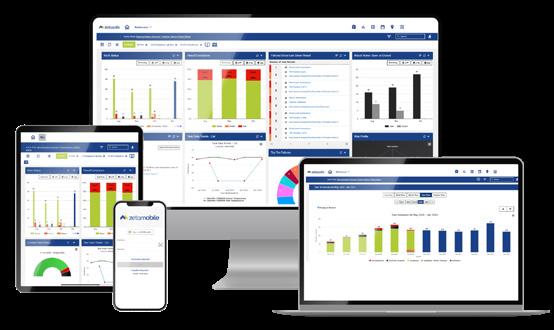
• Now able to make decisions based actual outcomes and accountability.
• Being able to provide and prove to management and regulatory bodies with robust audit trail.
• Management no longer request reports, these are now scheduled and automated saving the department countless number of hours per week
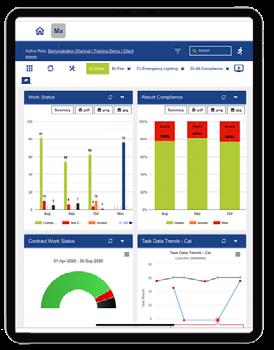
You need Reporting to be made easy
Challenges such as lack of real time data, time consuming analysis and no electronic audit trail make proving compliance a difficult task.
Struggling to find information when audited or potentially even questioned about a particular asset, can mean hours and hours sorting through various reports and information or speaking with contractors to provide the data about their facility.
By using ZetaSafe, you will you have total visibility of all your assets with a robust audit trail. The audit trail will demonstrate compliance and save hours previously spent searching for key information for audits. This is because ZetaSafe is much more than a web-based logbook, it provides email alerts, instant access to reports and a full audit trail. The document management facility is particularly useful, allowing the storage of all essential documentation, risk assessments, schematic drawings, correspondence, and audit reports, all in one place.
Hospitals are scheduling and completing around 35,000 tasks a month. These tasks may be completed by internal staff or may be performed by a contractor/service provider. It is a vast and complex process and occasionally some of them may be missed. By using ZetaSafe these omissions will be highlighted enabling rapid remediation of the situation. The consequences of not knowing this information and being reliant on your service providers/contractors could have detrimental effects to you and your facility, including the possibility of legal action.
With ZetaSafe you can access this information
at the touch of a button, saving time and giving you peace of mind.
Being reliant on a third-party provider for your compliance data can lead to delays, lost time and additional expense, and you can never be sure if they serviced the right asset to the right level. ZetaSafe’s mobile solution allows for engineers (third party or internal staff) to carry out works
to a task level and provide you with the proof and peace of mind they had attended and serviced the correct asset.
Some of the many benefits Hospitals shared that are using ZetaSafe for compliance:
• Being able to use your current mobile devices to perform ZetaSafe tasks in the field has meant there has been no new equipment cost.
• Condition surveys can be completed at the same time as PPMs that are fully customisable saving a considerable amount of time and providing us with information to be proactive.
• By the system providing us with immediate alerts and warnings, we are able to rectify any failures quickly and easily. This combined with being able to review the history of the asset and all the previous results means we are making decisions on facts rather than assumption.
• Our engineers and technicians will add supporting information and photos to a task. Providing us with additional accountability on their behalf but also gives us with the information we need to ensure our assets are running at their optimum.
• Being that we have a number of areas without wifi or phone service, having the team being able to work offline and then synchronise the data quickly and securely when they have coverage, means I know any actions can be prioritised and escalated.
• Being able to set up customised workflows has saved me hours of work. I am now able to proactively manage via exception and identify trends in my data, highlight areas to make improvements and prove adherence to internal and regulatory standards.
• Having the ability to access the long term data, means I am now able to measure the impact of improvements and how they translate into cost and productivity savings.
• Having ZetaSafe linked to my external CAFM system completes the workflow for reactive works. No more having to raise separate logs as it is now automated. Once rectified it provides the update back to ZetaSafe so I have one source of truth for any potential audits.
All results can be filtered on ZetaSafe to view contracts for different areas of compliance thus ensuring quality improvement and transparent accountability. This allows for easy identification of consecutive failures (figure 4 ) and the ability to determine the specific make or model of the equipment which has failed means the most appropriate equipment can be purchased in the future. This provides hospitals with outcome-based accountability instead of traditional performance indicators. It can also provide hospitals with further information around estates-based complaints and related personal injuries. The data in the graph below has been provided by South Eastern Health and Social Care Trust in the UK who have used ZetaSafe for a
number of years. They have been able to prove that since implementing and using ZetaSafe as a compliance management system, they have seen a significant reduction in the number of estates related complaints and estates related personal injuries.
Summary of benefits
ZetaSafe is providing to hospitals for managing compliance
• Create your own personalised dashboard that allows you to manage the status of your assets.
• Knowing that you can access the information 24/7, providing you with peace of mind.

• Setting up your own workflows, automated email notifications and automated reporting provides you with an extensive cost and time savings benefit.
• Able to simplify scheduling and highlighting asset trends helps in ensuring accountability and outcome-based decisions.
Ensuring that your facility is maintained and compliant will provide you and management with peace of mind. By implementing compliance management software, it will go a long way to reducing your risk and resolving your compliance issues. By having intuitive dashboards, being alerted to trends and patterns, this will make your facilities more resilient, and you will be able to intervene before major problems arise. This will help prevent any possible injury to people, financial risk exposure and reputational damage. Being able to reduce your risk by having real-time visibility, KPI’s and trends provides that peace of mind and resilience you need within your hospital.
Summary of benefits of ZetaSafe for sharing compliance information
• Consolidate data and trends across multiple sites, giving enterprise-wide visibility for key partners and other stakeholders.
• With user roles and permissions, you can control how your team works with your data, specifying who can view what information, who can make changes and more.
• ZetaSafe intelligently escalates consecutive compliance issues via auto reporting to individuals.
Manage all areas of compliance
ZetaSafe has been designed and developed specifically to manage compliance and risk, monitoring non-conformances in real time. ZetaSafe is regularly used to manage Water Hygiene,

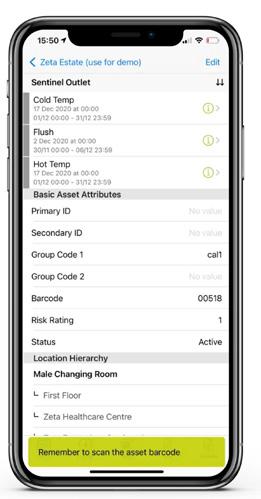
Legionella, Fire Safety and Emergency Lighting compliance and because of its ease of configuration, can be used to manage any other routine safety and compliance checks.
In addition, by using ZetaSafe as your cloudbased compliance hub, you can make sense of your task data wherever it comes from. By embracing IoT (Internet of Things) technology you can complement and supplement data from manual testing in numerous areas of the built environment.

Reasons to invest in IoT and ZetaSafe
• Real time sensor data can be used to trigger alerts to your onsite facilities or estates management team, meaning they can take proactive action before serious issues arise.
• A full audit trail is maintained detailing information on times, locations, and responses to alerts.
• IoT technology means you can monitor non-conformances through ZetaSafe in near real time, meaning estates and facilities managers can react to any adverse changes immediately.
• Sensor technology is being developed for different use cases all the time.
• Currently, the most widely used sensor driven solutions for estates management include temperature monitoring in hard to access places, environmental quality and level sensing.

• ZetaSafe is sensor agnostic and interfaces with a portfolio of different technology solutions.
About ZetaSafe
ZetaSafe is trusted by 1000+, healthcare, education, local government, water, and FM organisations worldwide. Designed and developed in the UK to solve the ever-growing

compliance issues, ZetaSafe has been used in Australia for over five years and is used in over 40 hospitals to help manage risk and compliance.
ZetaSafe is the leading cloud-based compliance software for health, safety, and environmental risk management. ZetaSafe will meet all National and State legislation and will help you to remain compliant with any requirements. Not limited to, but it is regularly applied to manage areas such as: water safety, fire safety, emergency lighting, gas and electrical, security, lab QA, routine checking, HVAC, lifts, and hydraulics.
For more information on ZetaSafe, Compliance and Risk Management contact Alison Allan Micad Australia 1300 049 118 or info@micad.tech
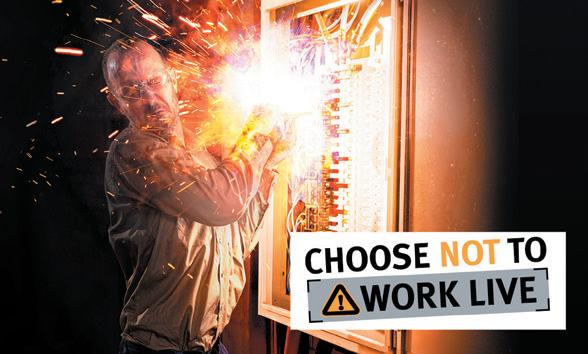
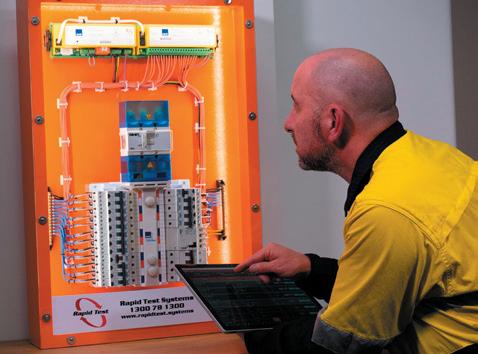
Rapid Test Systems
Reducing the risk of ARC FLASH or ELECTROCUTION when testing RCDs saving time & money. Rapid Test utilizes wireless technology to test your RCDs at the DB without removing the escutcheon, no need for working live. Installing Rapid Test into the switch board allows you to test power & lighting RCD’s with the push of a button. All testing is time & date stamped with retest and failure notifications available for easy site compliance management. Data is then uploaded from tablet/mobile to an Asset Portal helping manage your compliance worries with a few mouse clicks.

Seamless management of your RCD / Safety Switch compliance testing through wireless technology. Half your labour costs and improved safety makes Rapid Test a logical choice.
info@rapidtestsystems.com.au

THE EVOLUTION OF IN-BUILDING DISTRIBUTED ANTENNA SYSTEMS IN AUSTRALIA
Gary Gilbert RCDD Wesco AnixterMobile telephony has advanced and improved dramatically during the last 30 years. Mobile devices, which were originally primarily used for voice communication, are now used similarly to a personal mobile computer. Our mobile devices transmit tremendous amounts of data. Similarly, network planning needs advanced tools & methods.
Initially, mobile communication towers were adequate to penetrate the building. However, due to the increasing data flow required, a dedicated mobile network system inside the building is now required to assure smooth and continuous coverage both inside and outside the structure.
As per Mobile Data Traffic Outlook,
• In 2028, all growth in mobile data traffic will come from 5G, as 4G traffic is set to decline.
• The global monthly average usage per smartphone is anticipated to be 19 GB in 2023 and is forecast to reach 46 GB by the end of 2028.
• In 2028, 5G’s share of mobile data traffic is forecast to grow to 69 percent.
5G enables a new kind of network that is designed to connect virtually everyone and everything together including machines, objects and devices.1
5G is the latest generation in mobile technology transforming Australia’s business landscape. 5G networks deliver faster speeds, better reliability, and improved capacity. It enables a range of technologies – such as drones, Internet of Things (IoT), Edge Computing, autonomous vehicles, and virtual reality. At the core of this technology sits a network and devices sector that is continually investing and innovating to enable mobile connectivity.
Mobile connectivity is fundamental to the Australian economy and society. Australians spend on average three hours every day on devices – connecting with family and friends, accessing services, and working. Connectivity is also important for Australian businesses – for communication, commerce, and digital innovations that power farms, factories, supply chains, offices, clinics, and classrooms across the country.2
Australian mobile subscribers are predicted to reach 32.4 million by 2026, a 1.6% year-on-year growth rate. Since 1992, demand for mobile services in Australia has grown at an average of 2.2% each year.
Eight frequency bands are allocated for 3G, 4G & 5G mobile technologies, in Australia.

In situations where external mobile networks cannot supply reliable indoor coverage and it is necessary to provide RF coverage extension, the nature of the building and a variety of circumstances will determine the most appropriate coverage solution. Distributed Antenna System (DAS) are a shareable infrastructure, which may be described based on the designed components, as Passive, Active, Hybrid and Digital Systems. The In-Building DAS is designed to provide equivalent performance between all Carriers throughout the system.
The passive distribution system uses only passive elements like antennae, cables, couplers, and splitters. The Hybrid/Active system is another Distributed Antenna System that is becoming more popular for data centric environment. This hybrid architecture avoids the limitation of RF power distribution from the source equipment across the facility. The concept is to have a head-end and remote unit/s that are connected by optical fiber. The RF signal sources are connected to the head-end. These Rf signals will then be modulated and distributed to the remote units, which are connected through optical fiber for further distribution through a passive distribution network.
On the global market, there are different active solutions available, as well as ones that utilise structured cabling systems. Such 5G DAS system should preferably be designed and installed due to the power limitations of a passive solution.
The DAS system installed in Australia is ultimately the responsibility of the mobile service operator. The operators are responsible for ensuring that any DAS developed complies with the ACMA regulations laid down with the purchase of the spectrum.
All three mobile service providers have organised a Mobile Carrier Forum (MCF)to develop rules for DAS construction. The MCF publications, such as MCF 2018, MCF2022, are intended to help end users who create their own DAS infrastructure to which operators can connect. These MCF guidelines are revised every three to four years to reflect current Telecommunication Technology or service offerings on the market.
It is vital that we follow the standards because every DAS deployed will eventually have a lead carrier who will be responsible for ensuring that it meets the MCF requirements. It is the end user’s responsibility to locate a lead carrier decided by the MCF forum formed by the service providers. One of the most important components of the guidelines is ensuring that the network’s goods have been certified by the carriers. Service providers only use wireless products that have been tested to ensure compliance with ACMA laws and internal criteria.
The DAS Design and Implementation process is complex, but following the step-by-step advice is crucial to ensuring a successful and functional DAS system. The project lifecycle has four essential stages.
Preliminary Design (Initial Planning)
This is when we determine the wireless project requirements. Survey the construction site and drawings with the owner or consultant. Design constraints and a bill of materials should be proposed. Finally, include a pricing estimate for the product/solution. Before proceeding to detailed design, the lead operator must approve this.
Detailed Design (Second Stage Planning)
This is the stage in which we do a radio frequency survey and create a detailed design with an accurate bill of materials. We will develop the statement of work at this point once we have received consent from the Lead carrier.
Implementation
At this point, on-site installation of the dispersed antenna system will begin. To deliver the service, the carrier’s equipment will also be installed and commissioned.
System Testing and Handover
After the entire system has been installed, a final RF test must be performed. This verification, which will demonstrate that
the entire DAS system is operational, will be turned over to the lead carrier.
As you can see, this is a tough process. Wesco Anixter, with the Global experience of CommScope, is well placed to assist you. Remember that each new building will require its own mobile communication system. We have the knowledge and experience to assist in the development of a tailored local solution. We can operate as your lone point of contact for managing and balancing all the requirements for a successful DAS network.
Our DAS preliminary budgets thorough to detailed designs are done by certified iBwave Engineers who are familiar with local standards and service provider needs. This allows the end user to acquire quick approval from the Lead Carrier and gain complete control of the DAS system in their building.
REFERENCES
1

You’re invited Digitalization and the Healthcare Transformation.
Digitalization is a vital strategy and transformative force for healthcare organizations.
Confronted with a growing list of challenges, and fewer resources to solve them, healthcare leaders are turning to technology to adapt, investing in digital solutions that are ready for today, and flexible for tomorrow
In our 45-minute live stream event, Digitalization and the Healthcare Transformation, our global panel of healthcare leaders and technology experts will discuss the trends and technologies revolutionizing healthcare facility operations and delivery of care.
This interactive event will offer:
2
Expert perspective on the role of digitalization in optimizing your entire building systems infrastructure and optimizing lifecycle management
3
Backstage access to our connected patient room, complete with integrated technologies that empower patients and care providers
4
Plus! Pre-release access to our “Digital Solutions for the All-Electric Hospital” interactive eGuide
EcoStruxure™ for Healthcare
Enabling the healthcare facility ahead of its time.
First-hand insight into how healthcare leaders are utilizing digitalization to solve for workforce shortages, infrastructure challenges, decarbonization initiatives, and more 1 Join our online event! Friday May 3rd 10am AEST Discover
se.com/healthcare

Data-driven Asset Maintenance

Critical Power and Energy Management
Security Management
Electrify and Optimize Energy Sources
Project Master Planning and Delivery Optimization
Clinical Space Management
Integrated Patient Experience
Integrated Building Operation Platform
Sustainability and Decarbonization Strategies
Electrification and Digitization

HARNESSING TECHNOLOGY TO HELP MEET NET ZERO TARGETS
David Williams Vice President, Transactional Business, UK & Ireland, Schneider ElectricDavid Williams argues that achieving Net Zero is ‘a whole company initiative’ and that businesses and other organisations – including healthcare providers – serious about their carbon reduction efforts will likely need to invest in a combination of technologies and processes that work together to manage energy use. He warns against procrastination, saying ‘the time to act is now’.
Forget 2050: we will know where we are in the fight against climate change by 2030. To stand a chance of meeting commitments to limit temperature rises to 1.5 °C by midcentury, experts agree that we must halve global emissions in just seven years’ time.
Yet the recent energy crisis, sparked by the post-pandemic economic rebound and the conflict in Ukraine, is hindering progress towards Net Zero goals. Record high prices for gas and electricity have had knock-on impacts on operations, pricing, profitability, and more.
Immediate concerns outweigh long-term ambitions
Combating ‘more immediate’ challenges
This explains why business leaders have been focused on combating what they perceive to be more immediate challenges, such as economic pressures, supply chain delays, and skills shortages. Our research shows that 85% of UK and Irish business leaders in healthcare admit that the energy crisis will affect their ability to meet decarbonisation targets. This is in stark contrast to boardroom ambitions on tackling climate change: 87% of the healthcare organisations we surveyed have Net Zero plans in place, and 42% believe that climate change and Net Zero ambitions will become more of a priority over the next three years. Yet despite their
Eighty seven per cent of the healthcare organisations Schneider Electric surveyed have Net Zero plans in place, and 42% said they believed climate change and Net Zero ambitions would become more of a priority over the next three years.
best intentions, business leaders are not fully committed to their decarbonisation goals - a worrying setback for both the climate and for business. Moreover, 50% of healthcare leaders are finding it difficult to get board-level buy-in to tackle the energy crisis.
A difficult balance to strike
Our research findings highlight the fine balance that needs to be struck between addressing immediate threats while preparing for future ones. Although few in the boardroom will argue against addressing climate change, kicking the climate ‘can’ down the road won’t just impact broader efforts to address climate change – it doesn’t make business sense.
As energy market volatility becomes the new norm, delaying decarbonisation goals will present organisations
Schneider Electric says external consultants can support organisations in understanding the practical actions and investments needed to meet their Net Zero goals on time, in assessing current solutions and strategies, and in identifying improvement areas.

with new business risks associated with fluctuating energy prices and extreme climate events. Businesses that continue to address their carbon reduction ambitions, however, will see tangible benefits in terms of lower costs and greater efficiency.
Regaining lost ground
The good news is that practical steps can be taken now to get businesses back on track and reap the added benefits of embracing automation, digitisation, and sustainable technologies.
These benefits include reduced exposure to variable energy pricing, operational efficiencies through automation, electric vehicle cost savings in low emissions zones, phasing out dependence on finite fossil fuels and the futureproofing this creates, and the reputational benefits of being more sustainable.
When getting started, lower cost, ‘quick win’ measures can deliver immediate benefits for businesses, helping leaders to obtain crucial stakeholder buy-in for longer-term projects. Indeed, once the wider benefits of being carbonneutral become clear to senior decision-makers, Net Zero will rise up boardroom agendas once more. A good starting point is to create a strategy that aligns with your business plan, considers the entire lifecycle of power generation, and involves collaborators from across the business.
A company-wide initiative
Achieving Net Zero is a whole company initiative. Involving key stakeholders – from leaders to operation managers – from the outset will ensure that your plan has a widespread impact, and that accountability for its implementation lies with multiple functions. There isn’t a silver bullet for decarbonisation. It’s likely that you will need to invest in a combination of technologies and processes that work together to manage energy use. Understanding this from the outset will enable you to assess vendor solutions critically, and set stakeholder expectations on results.
You’re an expert in running your organisation: invite Net Zero experts to analyse your current plans and results to help you identify areas for improvement, and develop a comprehensive plan underpinned by your business goals and operational efficiency. Sustainability partners can provide endto-end digital solutions and services to help you determine which solutions you’ll need – and getting started can be as simple as booking a remote energy assessment.
Facilitating a more effective transition Net Zero
For example, Schneider Electric acts as both a sustainability enabler – supporting partners and customers with our digital solutions and services, and a sustainability practitioner –leading in ESG and committed to becoming Net Zero across our end-to-end value chain. In other words, the business is relied upon to advocate and support Net Zero initiatives across its network of partners and customers. We work collaboratively to share best practices and knowledge to facilitate a more effective transition toward net zero.
The great news for business leaders today is that investing in decarbonisation technologies and solutions not only makes business sense – it also doesn’t have to be expensive. The payoff can be significant for your operations, efficiency, resilience, and competitiveness – and can often be measured in months rather than years. With careful forecasting and planning, you can invest in Net Zero initiatives that deliver a mix of immediate and long-term results.
For many leaders, procrastinating on their Net Zero commitments now will hinder future growth. In fact, decarbonisation is expected to deliver US $26 trillion (£22 trillion) in economic benefits to the global economy through 2030. There’s never been a better time to get back on track with net zero.
Tips for getting back on track with Net Zero
While the UK Government’s recent postponement of the phase-out of combustion engine (ICE) vehicles and gas boilers

to 2035 has gained much attention, Prime Minister, Rishi Sunak, made it clear at the time that the Government remains committed to Net Zero. Indeed, announcing the changes on 20 September, he reiterated the need for action, quoting the Climate Change Committee by saying, ‘you don’t reach Net Zero simply by wishing it’. Action is essential.
At Schneider Electric, we continue to see strong indications from businesses in the UK and Ireland that trends towards electrification, automation, and digitisation in service of Net Zero are not slowing down. This is important, for if the world is to meet commitments to limit temperature rises by mid-century, we need to halve carbon emissions by 2030 – and healthcare providers will play a vital part in achieving this target. With just seven years on the clock, it’s critical that organisations get back on track with Net Zero activities now.
Some key actions to take
Here are some practical and cost-effective ways to accomplish this.
1 Start with a Strategy
Net Zero is a whole organisation initiative, and this will be reflected in your strategy. Aligning it with your strategic plan will reap top and bottom-line benefits from your Net Zero projects. Decarbonisation won’t live in a silo, with just a single team accountable for its success. Instead, it will be seen as everyone’s responsibility and, better still, its rewards will be felt by every department.
Reducing carbon emissions is a by-product of having wellrun operations across the organisation, so focusing on energy management as a whole can help your organisation achieve Net Zero while reducing energy use, lowering energy costs, and building resilience.
2 Broaden your mix of solutions
It might feel counterintuitive to invest in a broader range of projects and solutions if your organisation is feeling the pinch, but having a mix of Net Zero initiatives underway will compound the benefits while ensuring return on investment both over the short and long term.
3 Challenge your perceptions
There are some common misconceptions associated with reducing emissions. The first is simply tackling direct
Schneider Electric said: The technology is already available to help you accomplish your Net Zero ambitions – and the pay-off on these is often measured in months rather than years.
emission, rather than considering the entire lifecycle of power generation for your organisation. If you don’t consider this, you risk missing a vital opportunity to improve costeffectiveness and efficiency in the future.
Many leaders assume that having a Power Purchase Agreement (PPA) in place means that energy costs are under control. However, given the limited duration of these agreements, rising energy costs for finite fossil fuels will eventually impact your business, whether you have a PPA in place or not. Ultimately, switching to more sustainable energy sources will pay off in the long run as fossil fuel supplies dwindle.
Many stakeholders believe achieving Net Zero is expensive – but it doesn’t have to be. With clever planning and forecasting, you can build a Net Zero strategy suited to your operations, budget, and timeframes. The technology is already available to help you accomplish your Net Zero ambitions – and the pay-off on these is often measured in months rather than years.
Communication is key
Decarbonisation can offer many benefits – from energy and cost savings to greater resilience against energy market volatility, a boosted brand reputation, and better competitiveness in a sustainability-focused market. Communicating these benefits to your stakeholders and employees, while demonstrating a clear return on investment, will help you obtain the buy-in from leaders and colleagues you need to implement Net Zero plans.
That said, it’s worth setting expectations at the start of your Net Zero journey. Some sustainability projects are longterm investments and may not deliver immediate returns. Understanding this will help ensure that decision-makers do not immediately discount anything with a long-term payback. It helps if your plan also includes some short-term projects that offer immediate returns.
5 Get expert advice
It’s understandable if you feel overwhelmed by the task at hand, or don’t know where to start when developing your Net Zero strategy. That’s where expert advisors can help. External consultants can support you in understanding the practical actions and investments needed to meet your Net Zero goals on time, in assessing current solutions and strategies, and in identifying improvement areas.
Start now
With time fast running out to meet global carbon targets, we cannot afford to waste any more time. With other priorities on your plate, it may be tempting to delay decarbonisation for the future, in the hope of a better economic climate, more favourable energy market, or a more engaged workforce, but
David Williams is Vice President Transactional Business, UK & Ireland, at Schneider Electric. He leads the company’s Home & Distribution and Power Products businesses to support the end-to-end needs of customers and channel partners across the UK & Ireland zone.

Since joining Schneider Electric in 2011, he has honed his skills across a variety of business units, including Solar, Smart Buildings, Digital Power Solutions, and Power Products. Prior to taking up







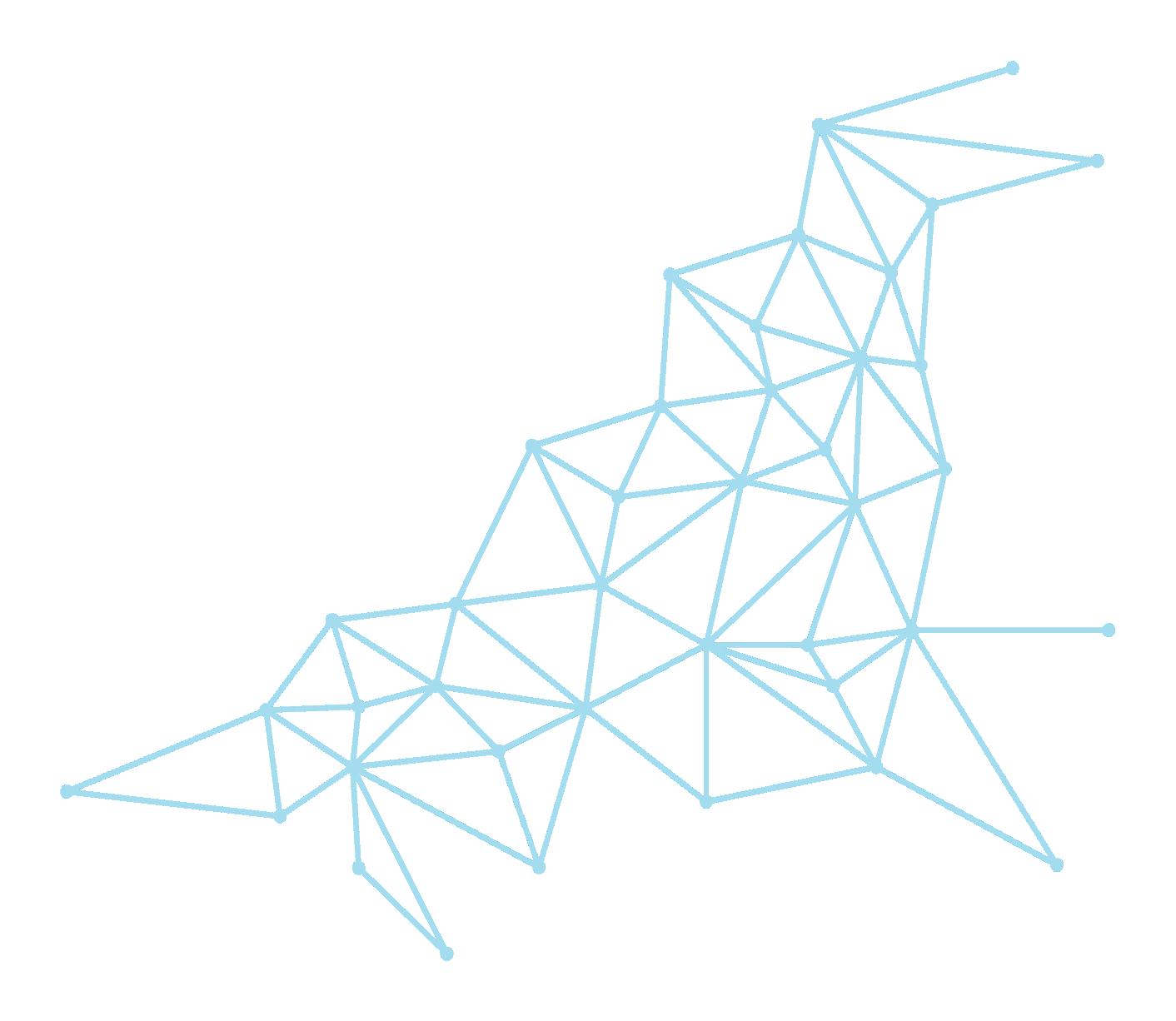
• Facilit y & Hospital Engineers
• R&D Engineers
• Product Managers
• CS SD and Endoscopy Managers

Sc can and get your free brochure on Water Filtration Solutions for Endoscope Reprocessing and reach out to us! P:



OFFERING QUALITY HEALTHCARE WITH A ‘CARBON NEUTRAL’ FOCUS
Albin Knauder, Daniel Kreuzer, and Bernhard ZahrlHospitaller Order of Saint John of God
Albin Knauder, Daniel Kreuzer, and Bernhard Zahrl of Hospitaller Order of Saint John of God, one of the largest private non-profit healthcare providers in Austria, analyse how the twin aims of providing healthcare and pursuing a ‘carbon neutral’ policy can be reconciled. They explain that protecting the environment and sustainability are ‘fundamental concerns’ for the Order as a sizeable healthcare provider.
The healthcare sector is responsible for 4.4% of global net emissions (two gigatons of carbon dioxide equivalent), and the sector’s climate footprint is equivalent to the annual emissions of 514 coal-fired power plants. If the healthcare sector were its own state, it would be the world’s fifth largest emitter.1 The sector is therefore in an unexpectedly paradoxical situation: on the one hand, it is called upon to promote the health of us

About The Hospitaller Order of Saint John of God
all – to heal and alleviate illnesses, and, where healing is no longer possible, to accompany people on their final journey. On the other, it is one of the biggest emitters of harmful greenhouse gases, and its activities thus cause lasting environmental damage.
However, many different, efficient, and sustainable ‘therapeutic measures’ can be taken. The environmental management of the Hospitaller Brothers of Saint John of God, one of the largest private non-profit healthcare providers in Austria, therefore extends to all areas of its hospitals and other care facilities.
How the Brothers of Saint John of God ‘protect the environment’
‘Man is not above creation, but a part of it.’ In order to do justice to the issue of sustainability, the Brothers of Saint John of God have decided to focus on a drive to protect and safeguard the environment – in particular focusing on decarbonisation – and in recent years have also succeeded in certifying all the company’s operational facilities to the EMAS III environmental management system.2
The Hospitaller Order of Saint John of God is a Catholic order that maintains about 410 health and social service facilities in 54 countries worldwide. In the „Austrian Province“ of the Order, with locations in Austria, the Czech Republic, Hungary, and Slovakia, the Brothers operate 12 hospitals with almost 9,500 staff at nearly 40 locations, as well as numerous other social and healthcare facilities, including care homes, residential groups for people with disabilities, a drug addiction treatment centre, a 72-bed dialysis facility, several hospices, and spa and wellness facilities.
In 2023, despite the coronavirus pandemic, there were 126,531 inpatient admissions, 799,109 outpatient contacts, and 56,013 operations, at the organisation’s Austrian facilities.
Following the example of the founder of the order, St. John of God (1495-1550), the Hospitaller Brothers of Saint John of God care for people regardless of origin, religion, gender, or social status, and seek to be available to all those seeking help. The Order’s facilities are thus accessible to all as private, non-profit institutions. Another characteristic of the Order is a keenness to address pressing problems in the health and social sectors with innovative and sustainable solutions, and to implement them with professionalism and Christian charity.

Some of the Brothers of Saint John of God’s facilities and buildings have existed for 400 years, and are mostly located in historic city centres. Accordingly, there were a range of visual and technical requirements to address in terms of protecting and safeguarding historic monuments and properties.
Harnessing this system, the charity’s management teams have available to them both the basis, and key data, for decisions that will reduce or eliminate environmental impacts in the future. Environmental aspects are identified and assessed by an Environmental officer with the support of local environmental teams. For each individual activity, direct and indirect emissions to air, as well as noise, water consumption, discharge of in-house wastewater, material efficiency, and indirect environmental impacts such as transport, purchasing, and construction, are assessed. To evaluate the environmental impacts, a system of utility value analysis is applied, which records the various factors behind environmental impact. Energy use has so far emerged as the most significant
environmental aspect across the organization, followed by waste generation and water consumption.
Motivation to act
The fact that the Hospitaller Order of Saint John of God is intensively involved in efforts to safeguard and protect the environment might, at first glance, seem surprising. However, protecting our environment and sustainability are fundamental concerns for us as a healthcare provider. As early as 2000, an internal document stated: ‘We must foster strategic attitudes which create responsible relationships with the environment in which we live and which we share, and of which we are merely stewards.’3
Another milestone was the publication of the encyclical Laudato si’ by Pope Francis in 2015. Sentences in this document such as: ‘There is an urgent need to develop policies so that, in the next few years, the emission of carbon dioxide and other highly polluting gases can be drastically reduced, for example by substituting fossil fuels and developing sources of renewable energy’, and ‘Worldwide there is minimal access to clean and renewable energy’,4 are an obligation for a Catholic order to act ecologically, and to eliminate the emission of CO2 into the atmosphere as rapidly as possible. From the Pope’s standpoint, we are all called upon not to leave environmental protection to chance, and to take responsibility for action. As a religious community active in 54 countries worldwide, the Brothers of Saint John of God have taken up this guiding principle.
Energy and CO2 goals in Austria5
CO2 emissions are produced directly or indirectly in a business’s daily operations – directly through heating systems, cars’ or trucks’ combustion engines in an organisation’s own fleet, the use of emergency power generators, or natural gas-powered steam generators for air humidification, and,


indirectly – via the production of electricity, community heating, and community cooling. The main goals that we developed, and decided to aim for, were CO2 neutrality for all our Austrian facilities, and drawing our energy supply from sustainable and fossil-free energy sources. These two goals were in turn divided into sub-goals:
• Use of renewable energy sources as a basic requirement.
• Obtaining our heat supply from renewable energy sources or industrial waste heat.
• Producing ‘green electricity’ from photovoltaic systems, with existing roof surfaces utilised to the maximum.
To achieve these ambitious goals, it is necessary to do more than just change energy suppliers to switch from nuclear power to electricity from hydropower plants. Numerous additional and accompanying activities are needed – with a ‘special toolbox’ required. Key elements include:
• Assessing the construction of all buildings, with new facilities built entirely in accordance with ecological, sustainable guidelines.
• Introduction of a company-wide energy system, with standardised key data.
• Establishment of a management system for the acquisition of state or local subsidies.
• Cooling of buildings via community cooling – through community heating networks wherever possible.
• Promotion of sustainable procurement.
• Promotion of e-mobility, including the construction of charging infrastructure.
• Maximum expansion of photovoltaic systems (electricity) and solar thermal energy (heat).
• Use of new energy-generating / storage technologies (such as hydrogen, electricity storage, etc.).
• Switching to more ‘climate-friendly’ anaesthetic gases, and recycling.
Achieving these goals step by step
To achieve a reduction in CO2 emissions, it was necessary –both in the individual facilities and at the highest management level – to achieve a voluntary commitment to environmental protection. At the same time, a resolution was passed to certify all our Austrian facilities according to the EU’s environmental management system, EMAS. Environmental teams have been created for each facility, responsible for both the continuous improvement of environmental performance, and the operational implementation of the environmental programme. Teams meet regularly, with both environmental concerns, and particular projects with an ecological impact, discussed and addressed. When assembling a healthcare facility’s Environmental team, care is taken to ensure that – as far as possible – all departments of the respective hospital or care facility are represented.
An environmentally conscious approach from staff contributes significantly to improving environmental
performance. To embed good environmental practices into everyday activity, all important guidelines are available on an intranet. In addition to being able to find information in the employee magazine, staff are kept informed about the environmental impact and environmental performance of their site through information events and training courses, regular ‘posts’ in site-specific employee apps, notices, and posters.
CO2 neutrality within reach
In the course of the EMAS certification exercise, the company’s management set the goal of halving CO2 emissions by 2025 compared with the base year, 2017, and achieving climate neutrality by 2030. Thanks to the motivation and commitment of all employees, the milestone goal of halving CO2 emissions was almost reached as early as 2023, with a 55 % reduction. The goal of a CO2 neutral energy supply through a complete phasing out of fossil fuels (oil and natural gas) was brought forward by four years, and is now planned for 2026.
It is, however, important to point out that a complete elimination of CO2 emissions is probably not technically possible from today’s perspective. Diesel-powered hospital emergency generators or, for example, specialist fire brigade vehicles, cannot feasibly technically currently be replaced by sustainable emission-free such equipment and plant. From today’s perspective, carbon zero is therefore only 98% achievable for an operator of hospitals and care and nursing facilities.
Examples already implemented
By 2024, photovoltaic systems with a total output of just over 1500 kWp (kilowatt peak, defined as the maximum output of a photovoltaic system in kilowatts) had been put into operation at our sites. Some of the Brothers of Saint John of God’s facilities and buildings have existed for 400 years, and are mostly located in historic city centres (such as in Vienna, Graz, and Salzburg, etc.). Accordingly, there were a range of visual and technical requirements to address in terms of protecting and safeguarding historic monuments and properties. For example, during the renovation of a home for the elderly in Linz, a solar thermal system with a collector area of 200 m2, and a photovoltaic system with an output of 31 kWp, were installed.
By using district heating from biomass power plants or industrial waste heat, heating systems with fossil fuels are no longer necessary. A hospital in Graz, for example, will be heated in future with waste heat from a nearby paper factory.
Harnessing biomass
In Kritzendorf, a retirement home was able to save 400,000 litres of heating oil annually by connecting to a local biomass heating plant, and cutting its CO2 emissions 54 % in a very short time by installing a 140 kWp output photovoltaic
system. A highly successful example of sustainable energy production can meanwhile be found in Kainbach near Graz, in a healthcare facility for people with disabilities located in an area of forest. The forest’s management includes the production of wood chips, which are used in a newly constructed heating system for ‘green’ heat generation. The construction of a photovoltaic system with an output of 100 kWp additionally contributes to a sustainable reduction in CO2 emissions.
Impact of purchasing
Central purchasing departments can also play a key role in environmental protection. The more ecologically conscious purchasing is, and the more sustainable the purchased products are, the greater the environmental benefit, and therefore the associated indirect reduction in CO2 emissions. A procurement catalogue was therefore developed for the sustainable procurement of medical and nursing consumables, and implemented at all locations. One of the key drivers was the increasing use of disposable consumables, especially in medicine, which had led to a corresponding rise in waste volumes. Another cause of higher waste generation is the shortening lifecycle of many products. For example, 80 % of all products are thrown away after a single use, and 99% of materials become waste after six weeks.
Potential within IT
Significant potential for a reduction in CO2 emissions has been identified in information technology (IT), with a combination of measures contributing to ‘ecologically responsible’ operation of the IT infrastructure:
• Environmental aspects such as energy efficiency, ecological footprint during production, and the materials used, etc., are all factored in when purchasing products.
• Ongoing measurement of the energy consumption of the server room equipment in the data centre, focusing on parameters such as utilisation and temperature, demonstrating any potential opportunities for reduced use.
• ‘Eco-friendly’ disposal of old appliances.
• Reducing the amount of data in the active system ‘environment’, by deleting and archiving, so as to enable reduced hardware requirements.
• Determining the necessary availability of applications and services in order to be able to define possible periods of nonoperation/ shutdown of systems.
• Systems with rotating spindles (hard disks) are no longer to be used; only systems with SSDs are to be purchased. Currently, 90% of clients have already converted to SSDs (which require only 25% of the energy of hard disks).
• Physical servers have been ‘migrated’ to virtual environments as far as possible, to minimise the need for hardware servers, and realise synergies.
• All IT systems are regularly checked, maintained, and replaced when necessary, to achieve the optimal efficiency.
Sustainable issues and goals ‘the order of the day’
The focus of all our activities is always on the people being cared for, and the mission to ‘cultivate and tend the Garden of Eden’. In practical terms, the Brothers of Saint John of God are guided by Pope Francis’s environmental encyclical, Laudato si’. This creates the best possible framework conditions for employees to carry out their daily work. As far as sustainability is concerned, the essential topics and goals can be summarised as follows:
• Socio-cultural and functional quality (ensuring health and well-being in the building, and a humane, therapeutic environment).
• Economic quality (reducing lifecycle costs, and preserving the value of plant, equipment, and buildings, through space and energy efficiency).
• Ecological quality (protection of the environment, and conservation of natural resources).
Significant changes in the global energy market make the issue of energy a future topic of particular importance for the Brothers of Saint John of God. In addition, reducing energy use is an essential factor for effective environmental protection. To ensure that we do not meet our present needs at the expense of future generations, the Hospitaller Brothers of Saint John of God are constantly working on innovative and sustainable environmental projects.
References
1 Health Care’s Climate Footprint – How the health sector contributes to the global climate crisis and opportunities for action. Health Care Without Harm / ARUP. September 2019 https://tinyurl.com/2fvmypr7
2 The EU Eco-Management and Audit Scheme (EMAS). European Commission. https://tinyurl.com/wjacf48y
3 Hospitaller Order of Saint John of God Charter of Hospitality: Caring for the Sick and Needy in the Manner of St John of God. Rome 2000
4 Encyclical Letter Laudato si’, Vatican 2015 Ch 26. https:// www.vatican.va/content/francesco/en/encyclicals/ documents/papa-francesco_20150524_enciclicalaudato-si. html.
5 These targets are currently based on Scope 1 and 2. The implementation of Scope 3 is being planned.
Acknowledgment
This article, titled ‘Navigating the road to net-zero CO2 emissions’, first appeared in the IFHE Digest 2023. Reprinted from the Health Estate Journal, the monthly magazine of the Institute of Healthcare Engineering and Estate Management (‘IHEEM’).
Daniel Kreuzer
Daniel Kreuzer is a trained electronics and communications technician. He was Technical director of the Order’s hospital in St. Veit/Glan (Carinthia) for almost 20 years before moving to provincial management in 2019. Here he is strategically and organisationally responsible for construction, facilities management, and medical technology. His geographic remit includes facilities in Austria, the Czech Republic, Slovakia, and Hungary. He has been a Board member of the Austrian Association of Hospital Engineers since 2017.
Albin Knauder
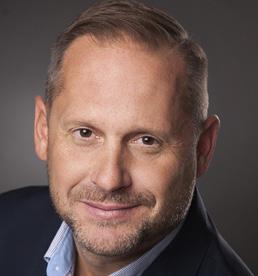

Albin Knauder studied environmental management. From 2004 to 2021 he was head of the Ecology Department of the Kärntner Krankenanstalten Betriebsgesellschaft (KABEG), responsible for waste management, hazardous goods, energy management, wastewater management, environmental management, and EMAS III certifications. He has been the Environmental officer of the Brothers of Saint John of God in Austria for several years. He is a member of both the Working group on ÖNORM S2104 (medical waste) of the Austrian Standards International, and of the Austrian Waste and Environment Forum, and an experienced lecturer.
Bernhard Zahrl
Bernhard Zahrl has been the head of Corporate Communications for the Austrian Province of the Hospitaller Brothers of Saint John of God since 2001, where he coordinates the work of a team of over 30 colleagues in the individual centres. He is also responsible for a monthly healthcare-related magazine. He has been involved in environmental protection since his youth.

SOLVE SMELLY BATHROOM DRAINS WITH DRAIN MATE®
Having a clean and hygienic environment for residents and patients is paramount for a successful Healthcare business. You can clean all you like, but it can be difficult to get rid of those bad smells coming from the bathroom floor drain and the last thing you want is the smell being what is remembered about your Healthcare facilities.
Using harsh and nasty chemicals is a short term and costly solution. The simple, easy, cost effective and environmentally friendly solution is Drain Mate®
How it works

Drain Mate® is a one way floor drain that fits easily into your existing standard 100 mm (4 inches) floor drain. Drain Mate’s unique self-closing trap door lets waste and water through, but keeps smells, pests, noise and overflow out.
Design and manufacture
Designed, invented, and made in Australia, Drain Mate® is made from quality ABS plastic, and is 100% recyclable. Drain Mate® has also been subjected to testing by a recognised testing laboratory for Australian Standards and has been granted Level 2 Certification and complies
with approved specifications
WMTS-040:2022 (License: 023117).
Drain Mate® is easily installed; no plumber required and attaches to your existing floor drain grate cover using one of our four supplied washers and attachment screw. There is also no need for any additives for Drain Mate® to function correctly and is easily removed for cleaning.
Where it is used
Drain Mate® has been installed in many, many bathrooms throughout Australia, both residential and commercial, providing an immediate solution for drain smells and pests. Drain Mate® can be installed anywhere there is a 100 mm floor drain, including homes, apartments, hotels and motels, restaurants, hospitals and healthcare facilities and schools.
More information
For further information on Drain Mate®, visit our website www.aussiedrainmate.com.au for a demonstration video, installation slide show, where and how to buy Drain Mate®. There is also an FAQ section on the website that can answer your questions about the manufacture Drain Mate®; fitting, operation, and maintenance of Drain Mate®
You can also simply contact Mark on 0400 193 821 to discuss how Drain Mate® can solve your 100 mm floor drain problems.
SAVE MONEY AND BENEFIT THE ENVIRONMENT
KAESER compressors and the compressed air they generate are used in a multitude of applications. However, the fact that compressor exhaust heat can be harnessed often remains forgotten. This opportunity saves energy and costs, while also reducing the CO² footprint.
100% of the drive energy supplied to a compressor is converted into heat. This heat could simply be conveyed away, however, there are plenty of ways to make use of this readily available energy source.
The simplest, most efficient method is to use the compressor heat directly. That is, air ducting directs the heat to neighbouring rooms or buildings.
In addition to providing space heating, hot compressor air can be used for applications such as drying processes, generating hot air curtains or preheating burner air for
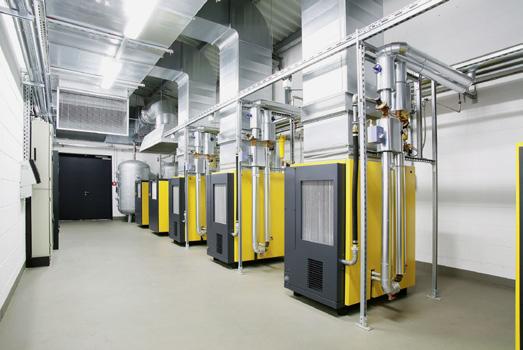
heating systems. Compressor exhaust heat can also be used to supply hot water heating and service water systems.
For more information about KAESER heat recovery : https://au.kaeser.com/products/rotary-screw-compressors/heatrecovery/
ARBS 2024: INNOVATION IN HEALTHCARE ENVIRONMENTS
Healthcare professionals, mark your calendars for ARBS 2024 held from 28-30 May 2024 at the Sydney ICC. Join over 300 exhibitors and an expected 9,000 visitors in exploring the forefront of HVAC&R and building services.
Discover innovations that promise to revolutionise patient care through superior climate control and air quality. Network with
international experts, partake in inspiring seminars, and celebrate those that are at the forefront of our industry at the 2024 Industry Awards.
With a showcase encompassing the latest in cleanroom technology, medical gases, and lab climate systems, ARBS 2024 is not to be missed.
Register at www.arbs.com.au and position yourself at the forefront of healthcare facility management and technological excellence at ARBS 2024.
ZIP HYDROTAP ULTRACARE
Zip HydroTap UltraCare uses a multi-barrier system for the prevention and control of Legionella* and other waterborne bacteria.
Designed for health and aged care customer needs, Zip HydroTap UltraCare is powered by G5 technology and is available with TouchFree Wave, a 100% contactless solution to instantly dispense puretasting drinking water with a simple wave of a hand.
Zip HydroTap UltraCare uses a combination of localised treatments and barriers that are proven as the most effective method of reducing waterborne organisms and pathogens including Legionella**.
The barriers provided in the UltraCare system are:
• MicroPurity™️ 0.2-micron carbon-free filtration
• SteriTouch® antimicrobial enhanced surfaces
• MicroPurity™️ UV-C LED disinfection
• Lifecycle maintenance plan
• Zip HydroCare Gold+
Visit www.zipwater.com/products/hydrotap-range
Innovative MicroPurity filtration is used in Genuine Zip filters to deliver an unrivalled drinking water experience. Our filters are NSF and Watermark certified to reduce the most common contaminants, including the ones you can’t see, smell or taste. Non-genuine filters may not deliver the health benefits that our customers expect from genuine Zip filters. Zip Water recommends the use of genuine filters as they are guaranteed to be certified.

*ALS Pty Ltd Testing of the Zip HydroTap UltraCare system efficacy tests
**enHealth 2015 Guidelines for Legionella control in the operation and maintenance of water distribution systems in health and aged care facilities, Australian Government, Canberra.
HIPAC HEALTHCARE
Revolutionising mental health environments with innovative anti-ligature products and expert customisation.
Creating a mental health environment that balances safety, security, recovery and therapeutic design is an ongoing challenge for health groups, designers and builders. Hipac Healthcare, a trusted Australian distributor and manufacturer, works closely with industry specialists to bring world leading mental health solutions to the Australian market to improve health outcomes through functional and safe design.
With a diverse range of solutions sourced globally and supplemented by local manufacturing capabilities, Hipac works to address the unique challenges faced in mental health environments. From their award-winning anti-barricade doorset with a full door ligature alarm, ensuite doorsets, locksets and handles, bathroom and bedroom accessories and more, they cater to the specific requirements of each client by providing innovative solutions.
Setting Hipac apart is their unwavering commitment to flexibility in design and fitouts. Leveraging their technical expertise, Hipac tailor solutions that seamlessly integrate into different building environments and stages, be it greenfield or retrofit sites. Whether you need a complete solution or individual components, Hipac is the go-to



comprehensive partner, delivering expert service, documentation and installation support with confidence.
Combining nearly 40 years’ experience with extensive customer insight, Hipac has become the trusted partner for architects, builders and clinical professionals. Speak to Hipac today to find out how they can help you minimise risk in your mental health environment.
Visit us to learn more: 1800 75 93 93 info@hipac.com.au www.hipac.com.au/mentalhealthsolutions

HIGH RISK WATER SYSTEMS
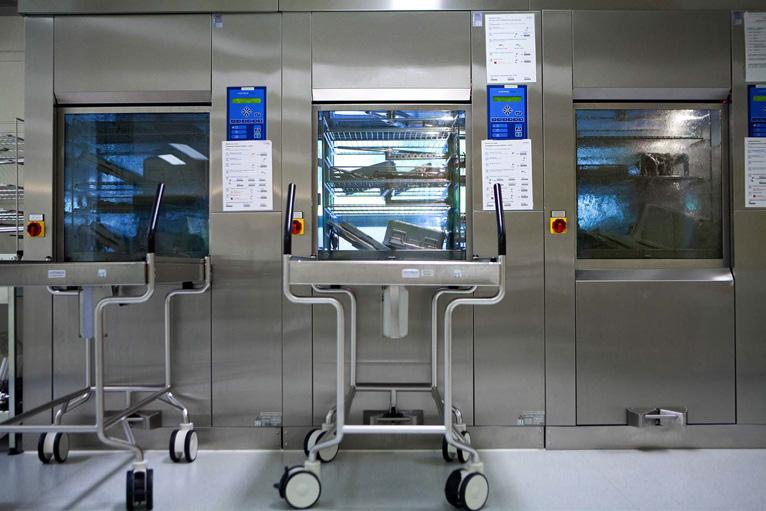
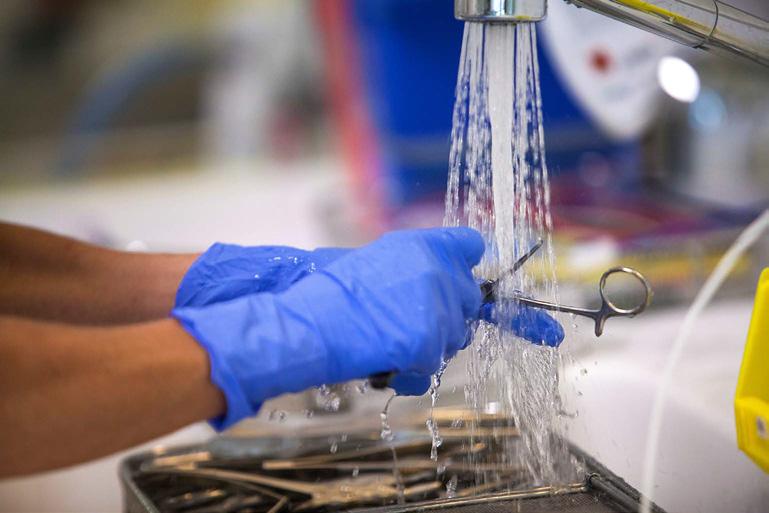
Legionella Risk Management
TMVs
Disinfection Systems
Cooling Towers Boilers
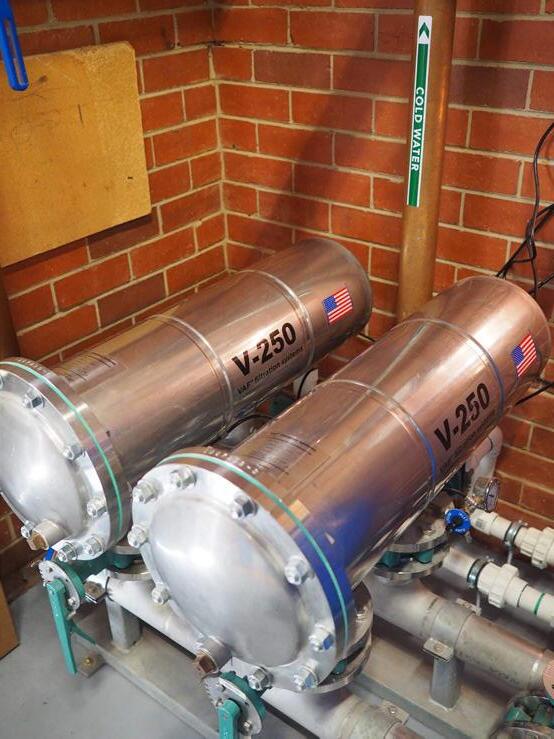
WE CARE ABOUT YOUR WATER
Australian owned and operated for over 40 years
hydrochem.com.au
